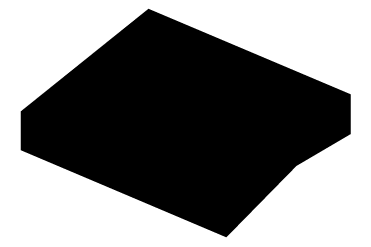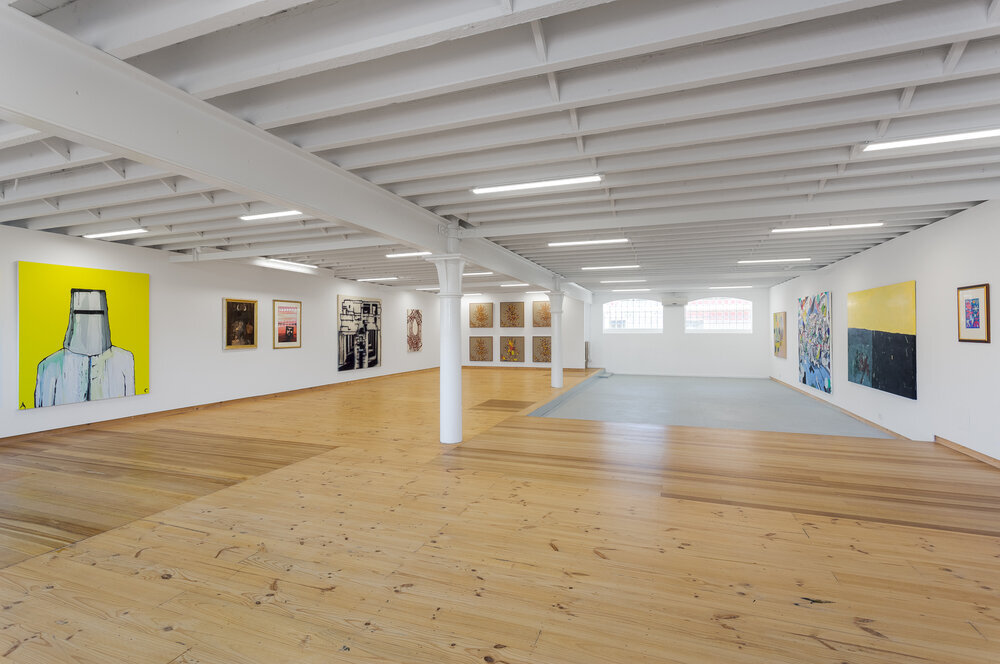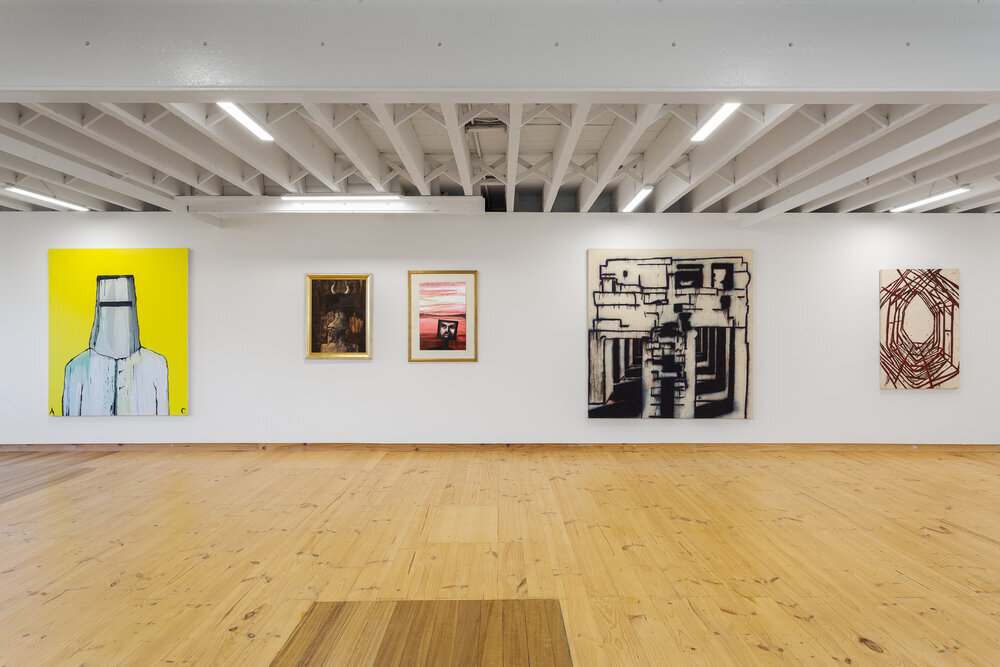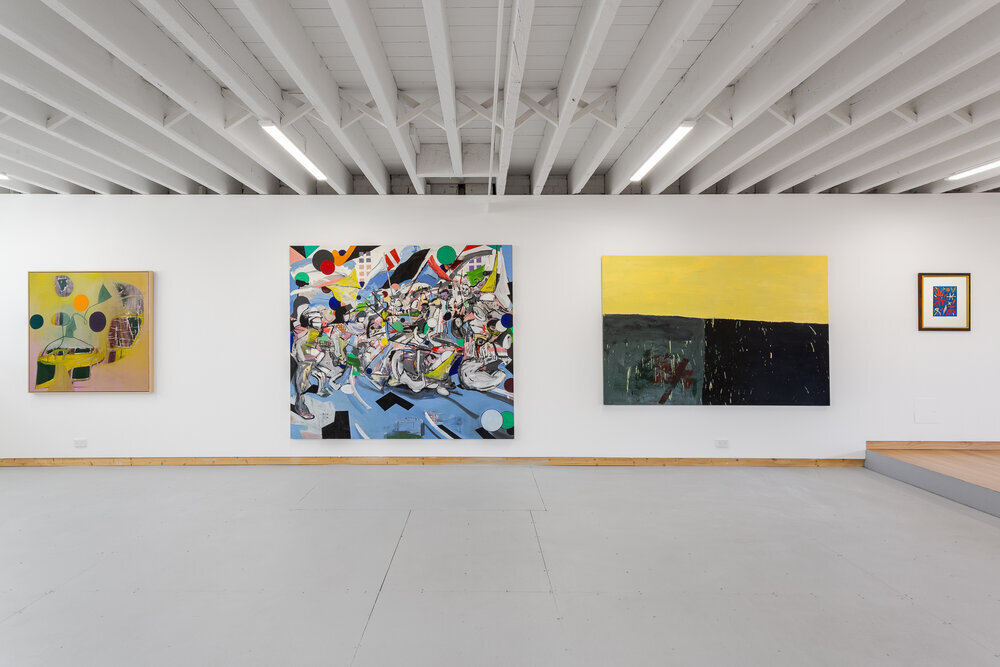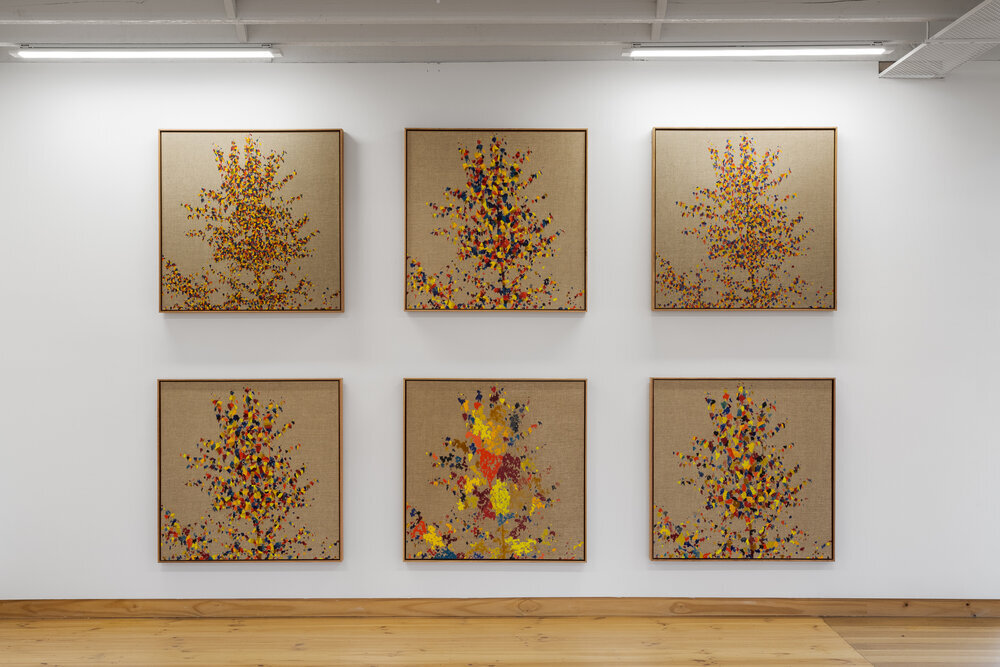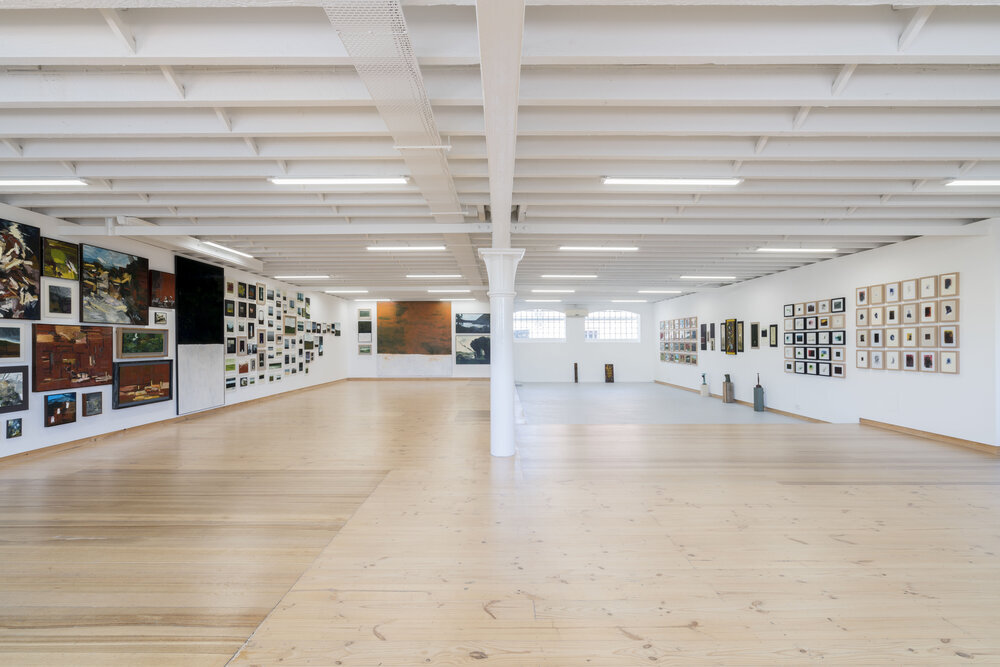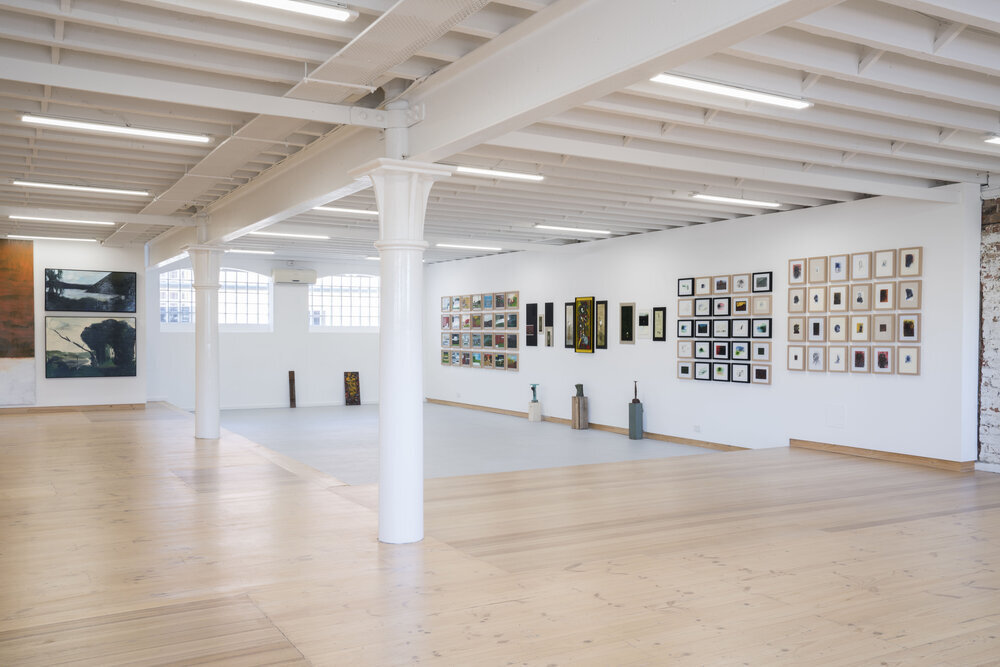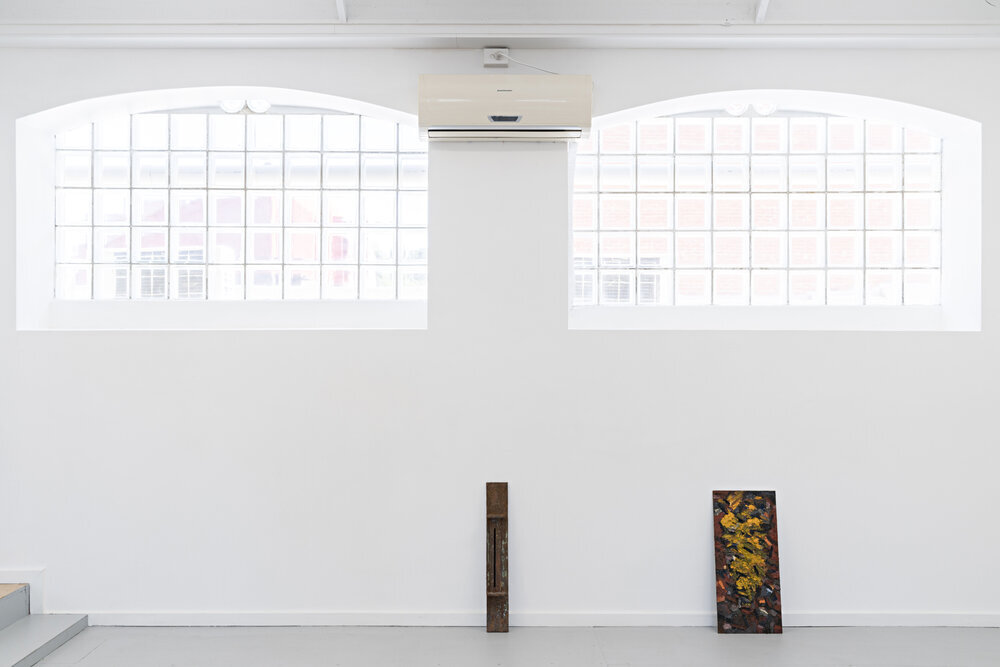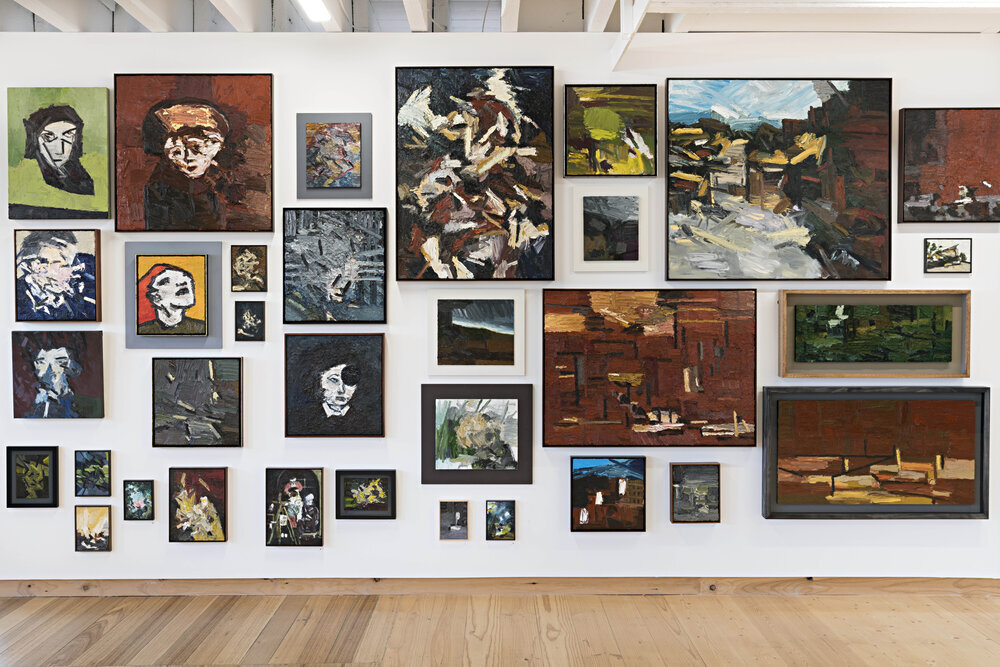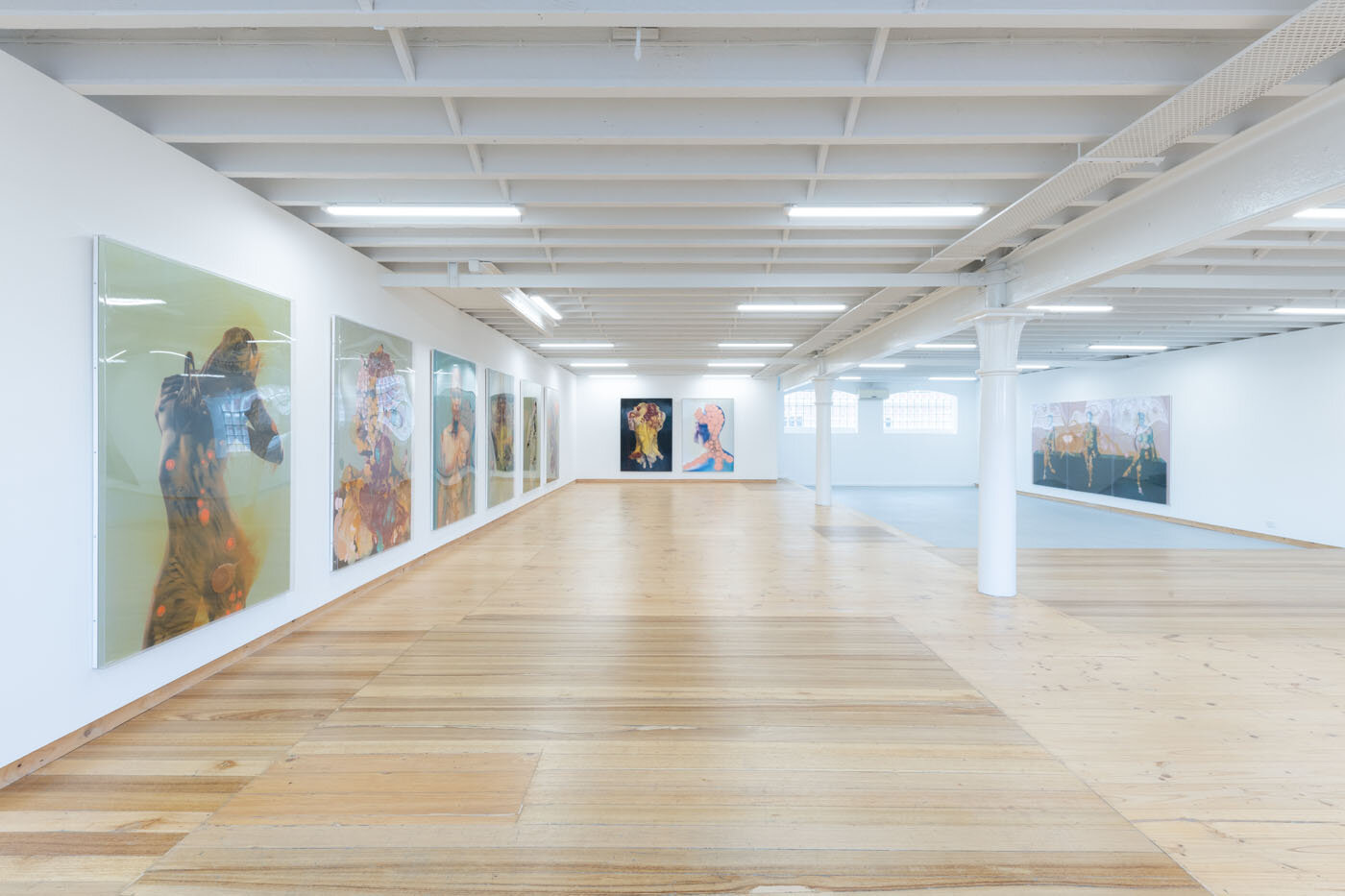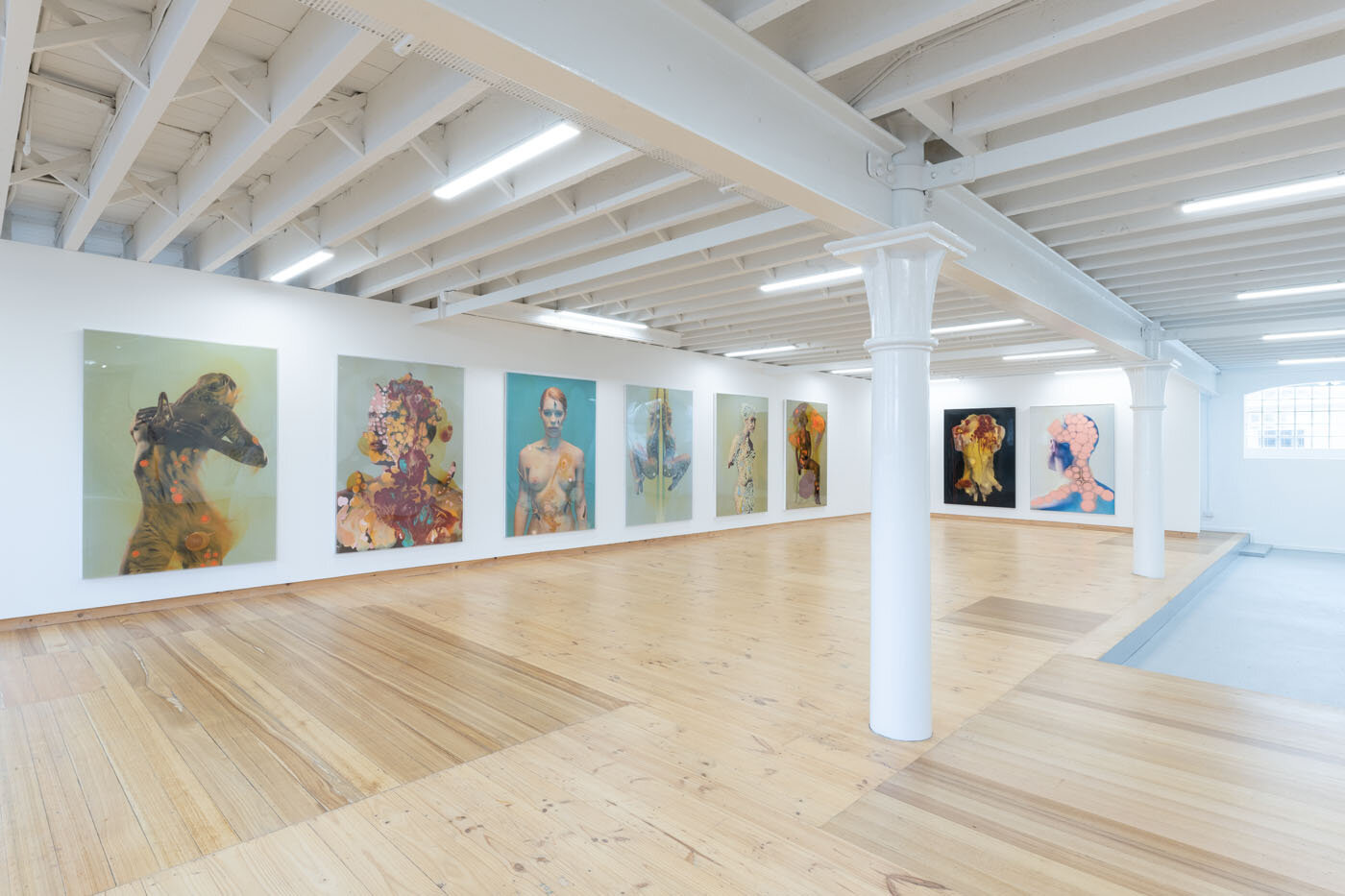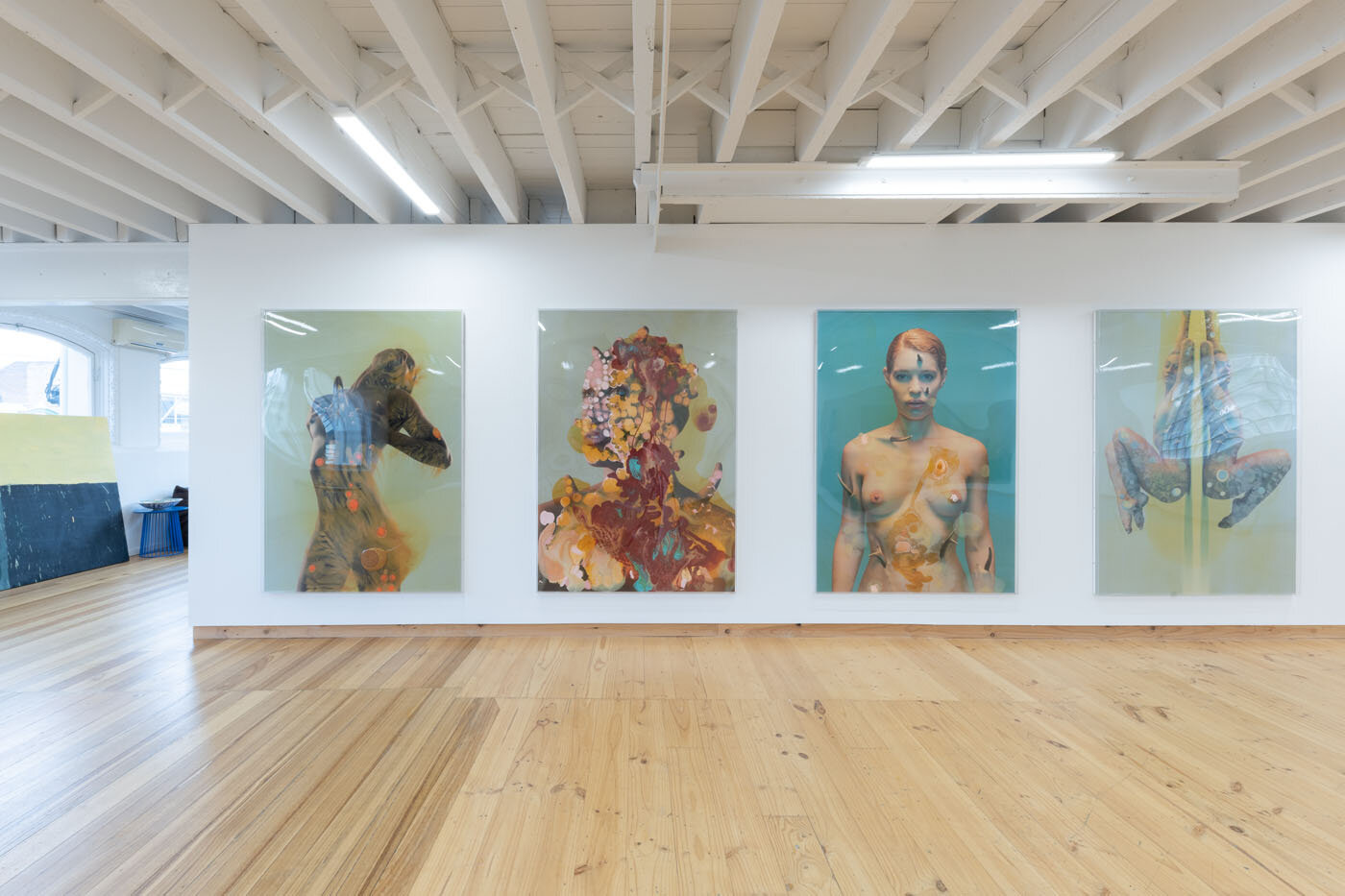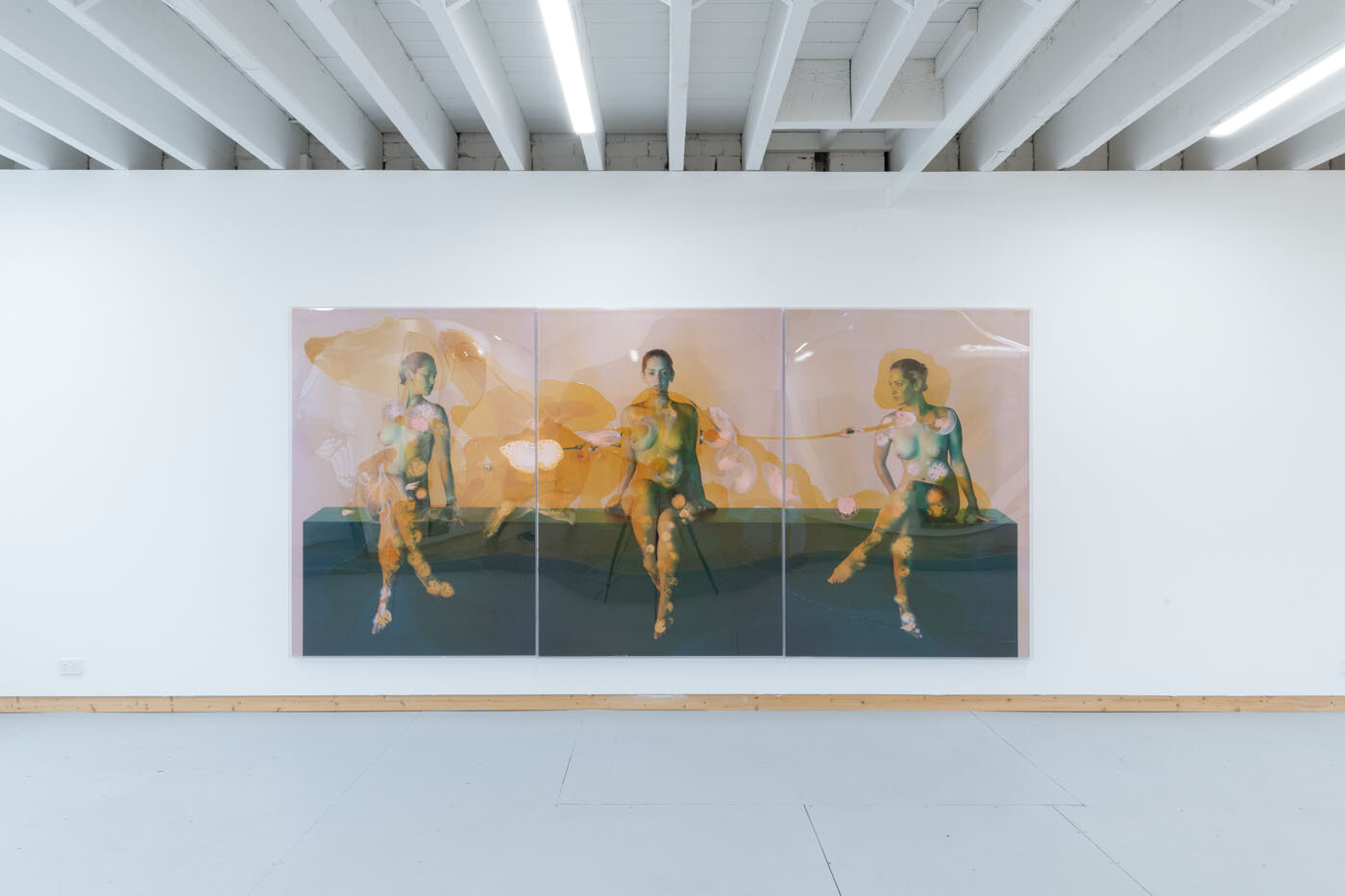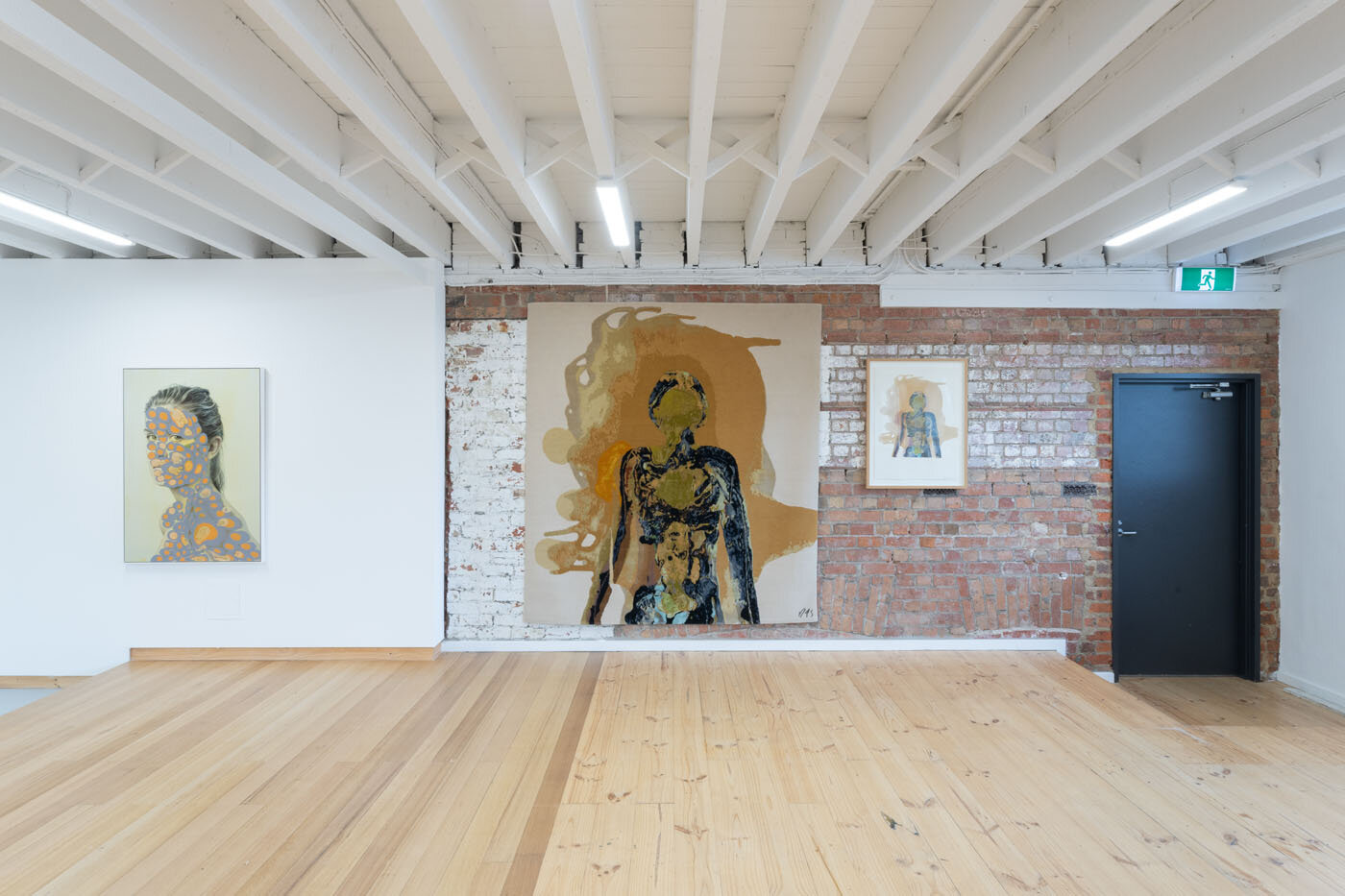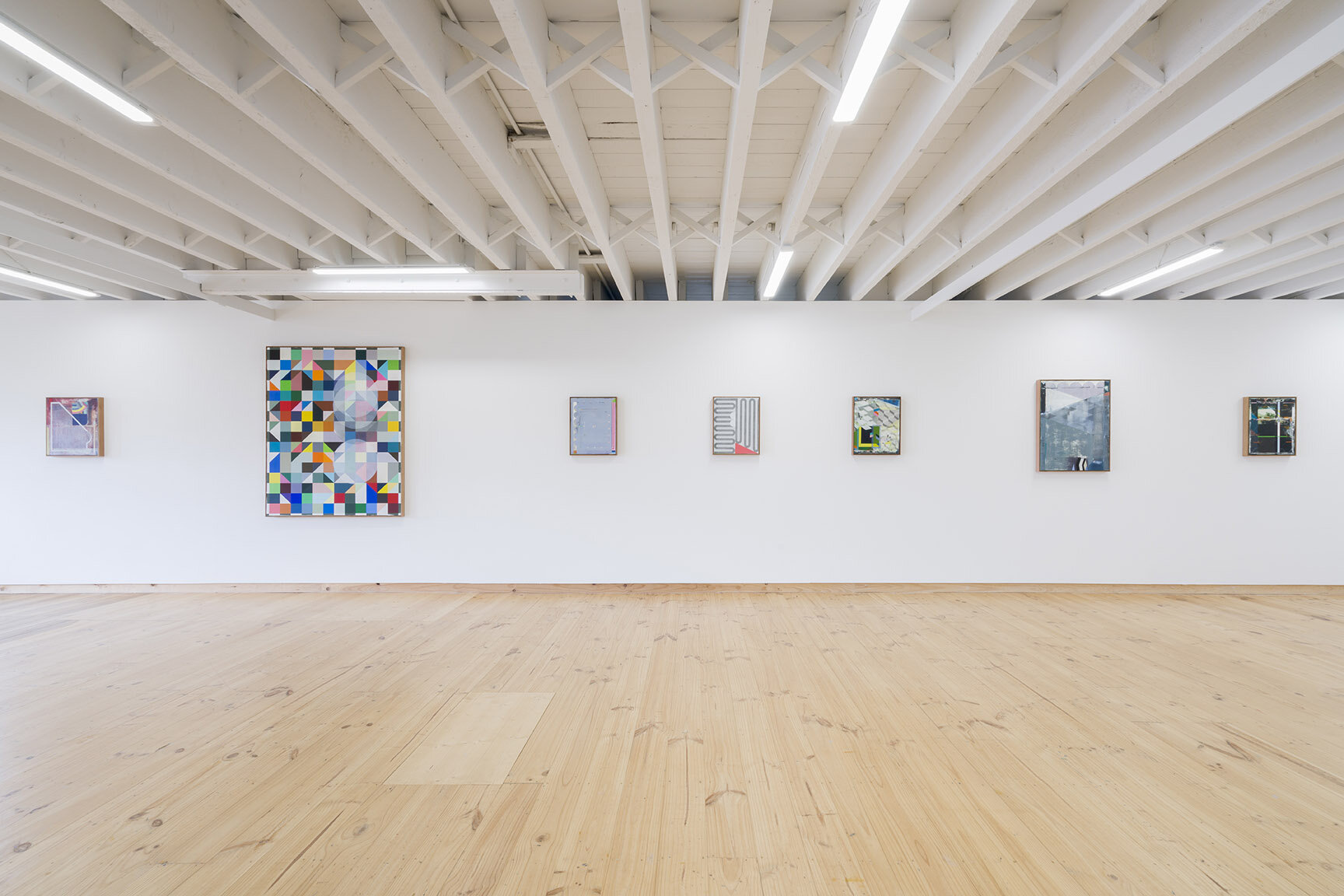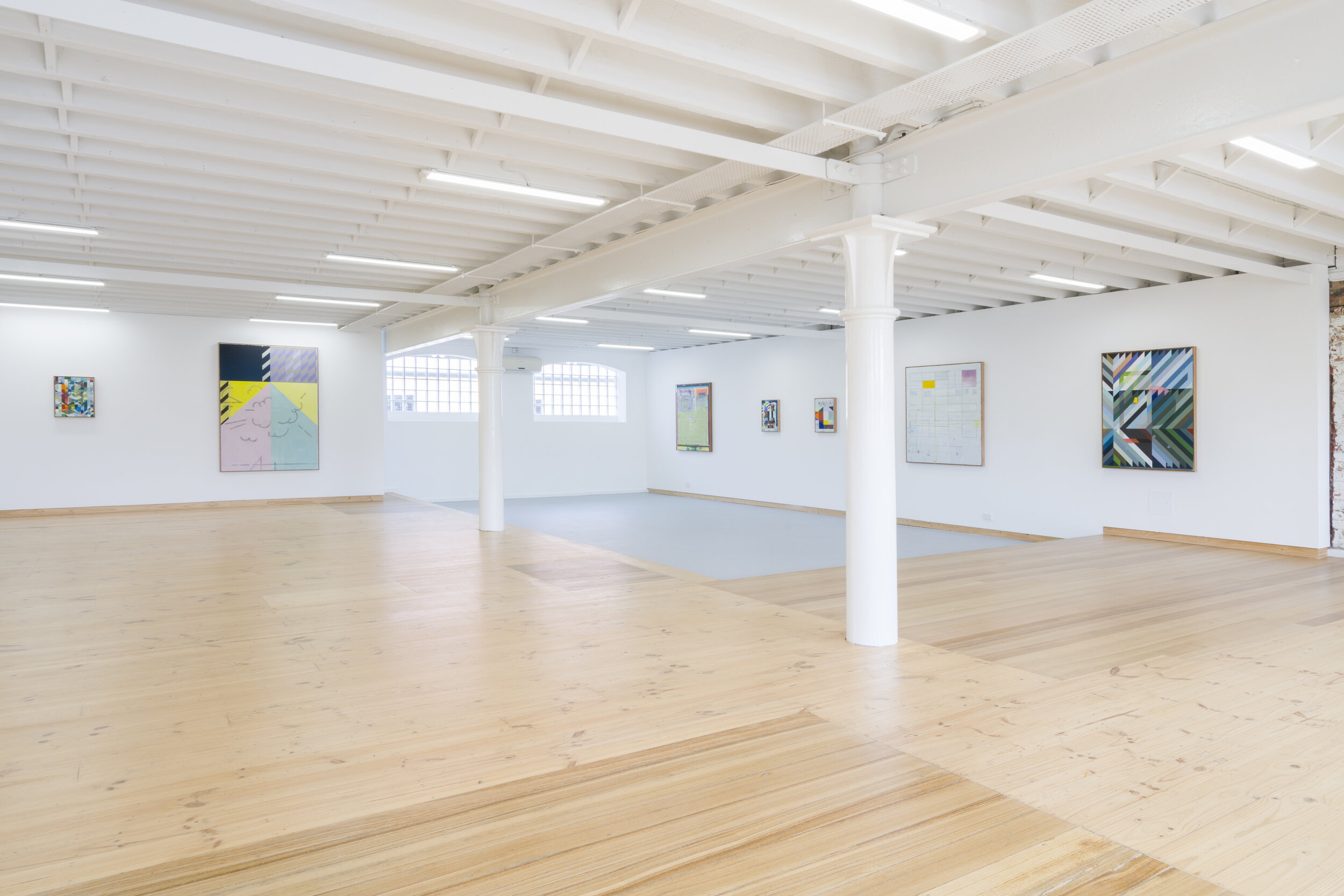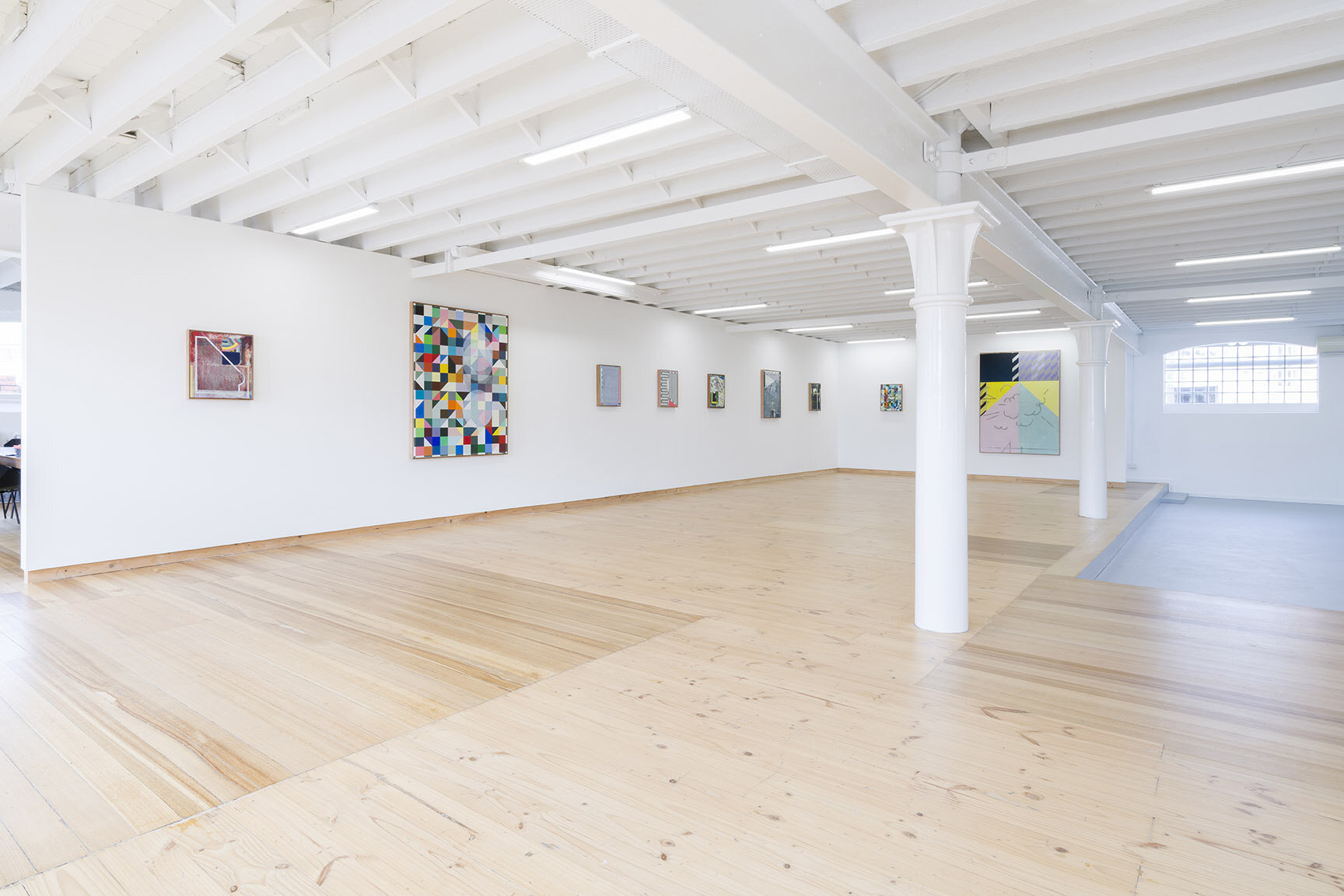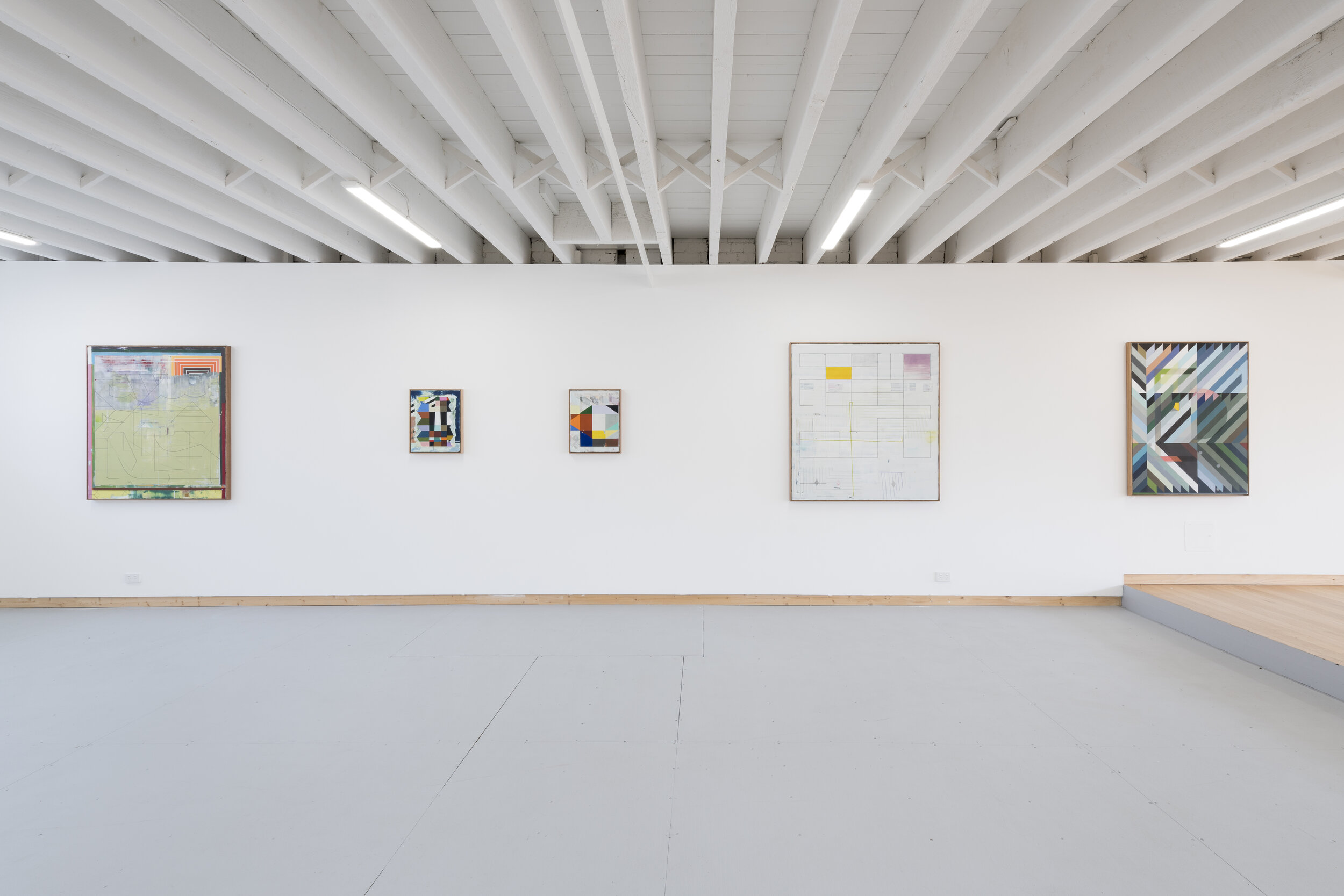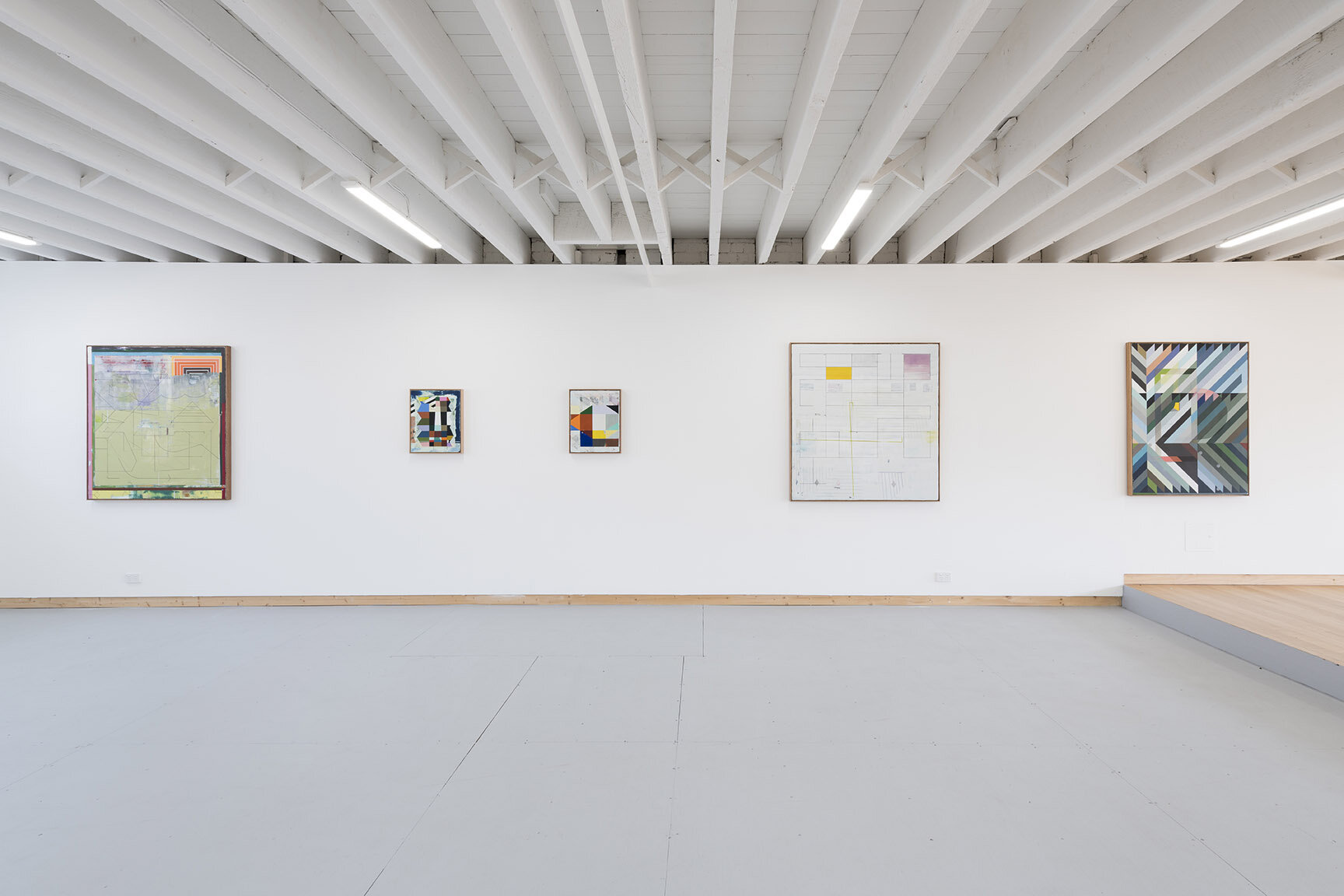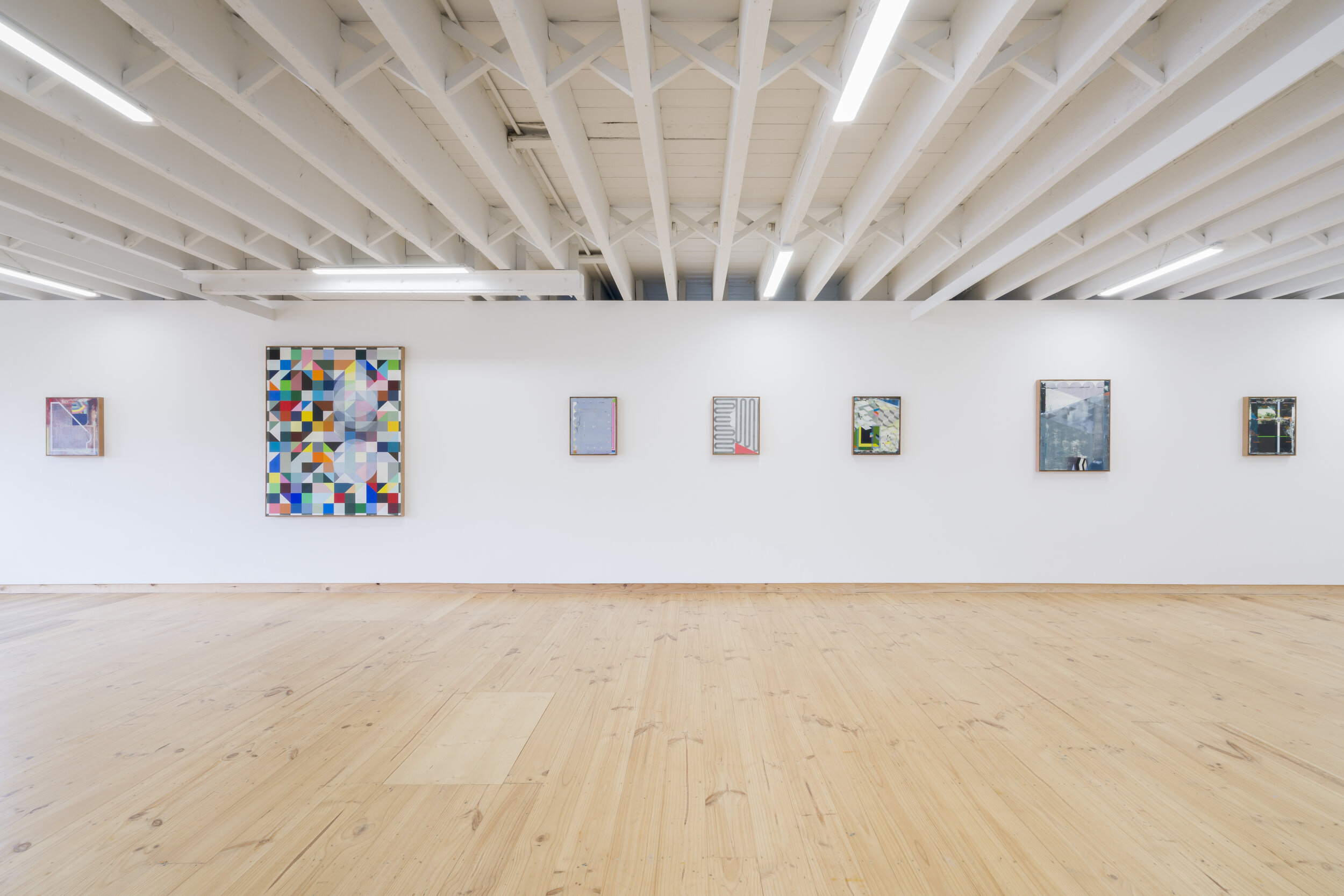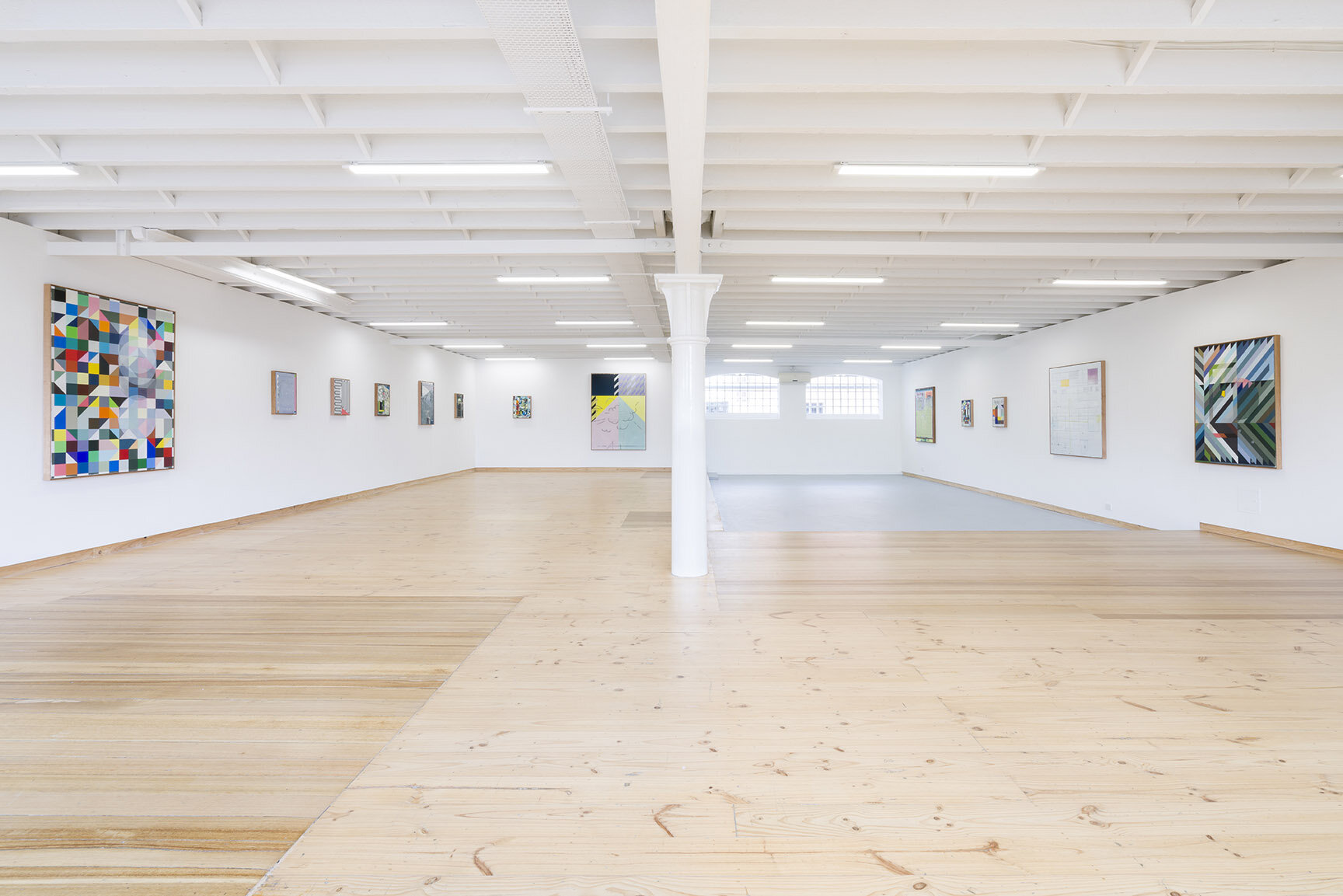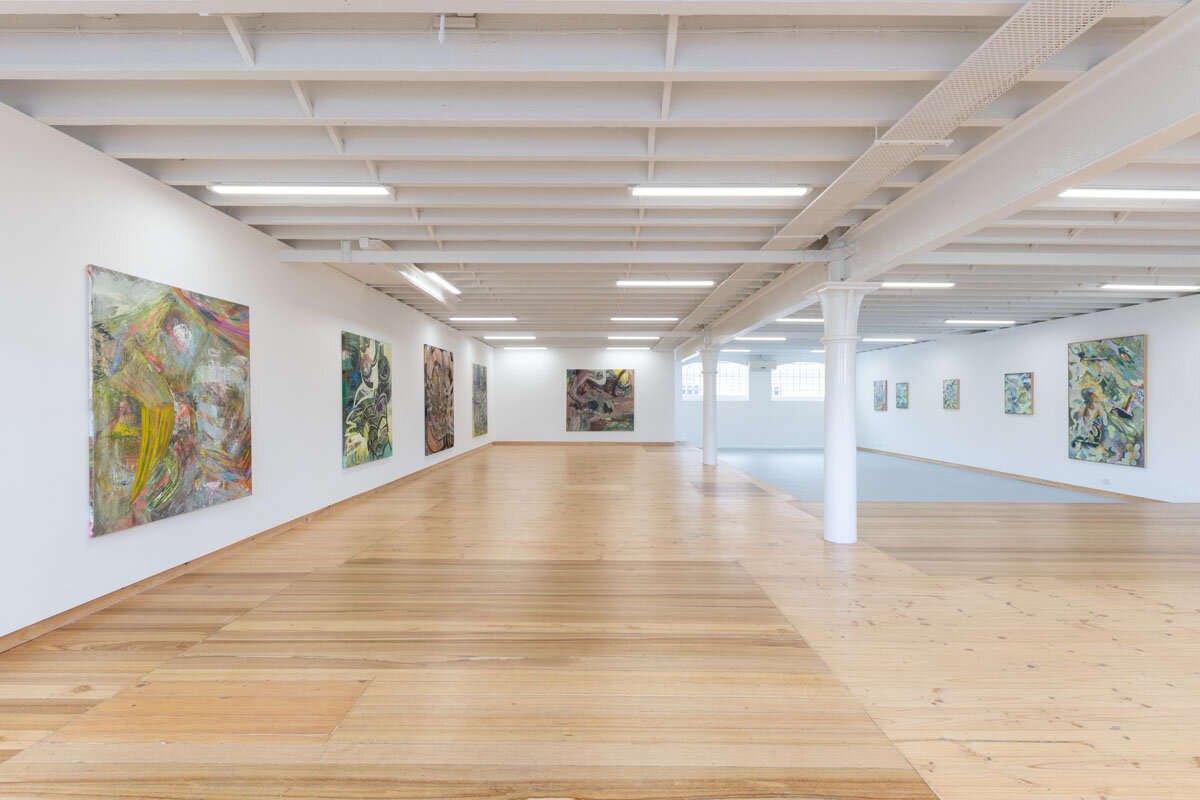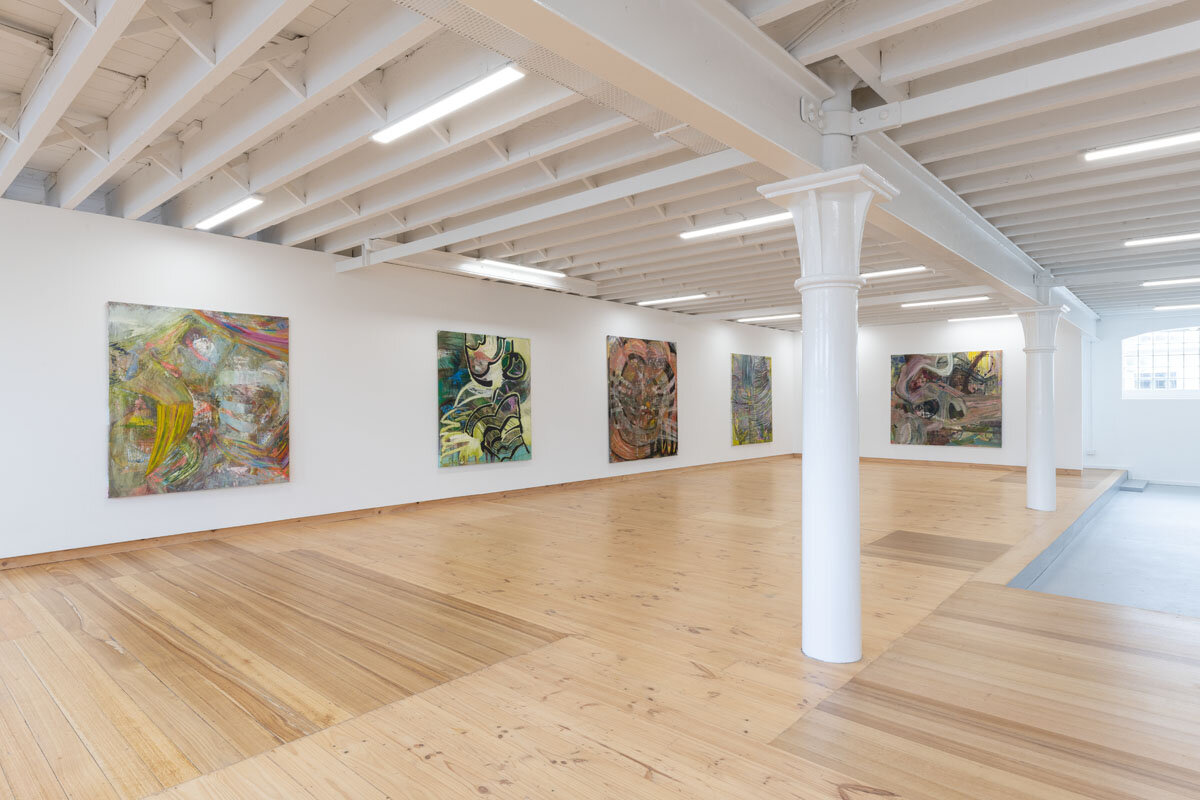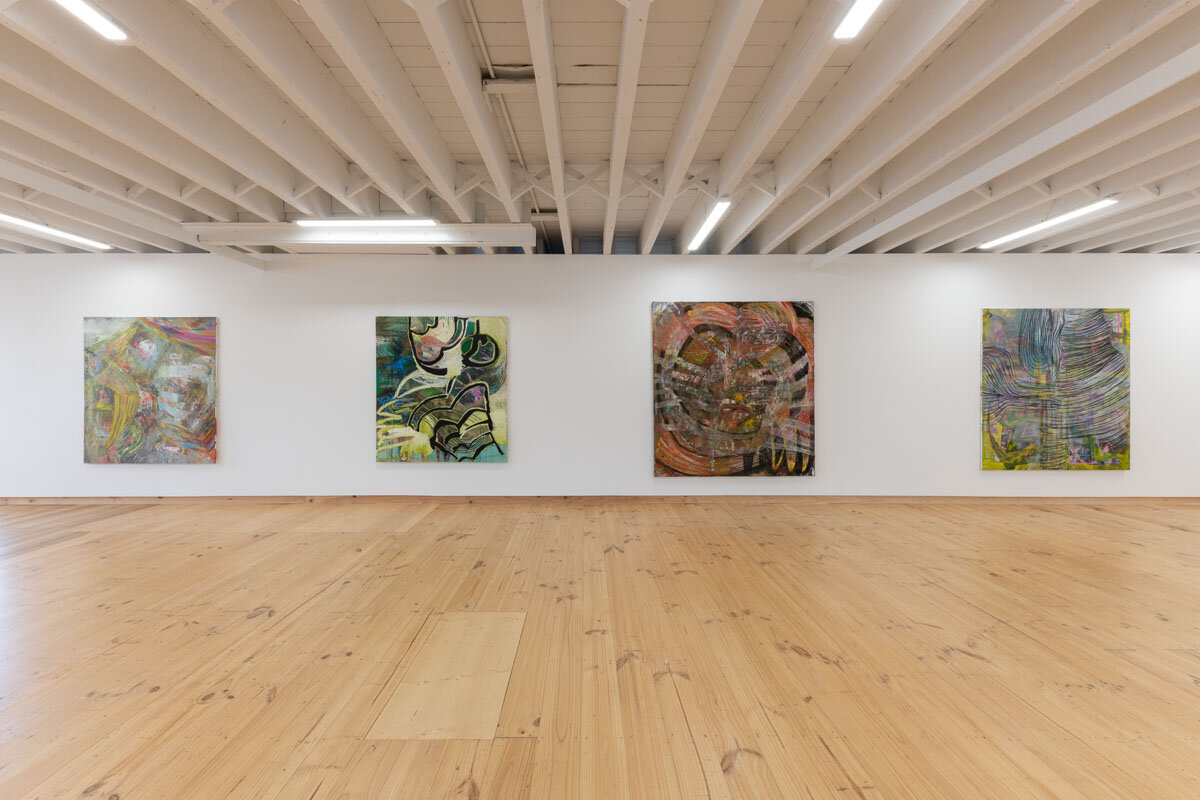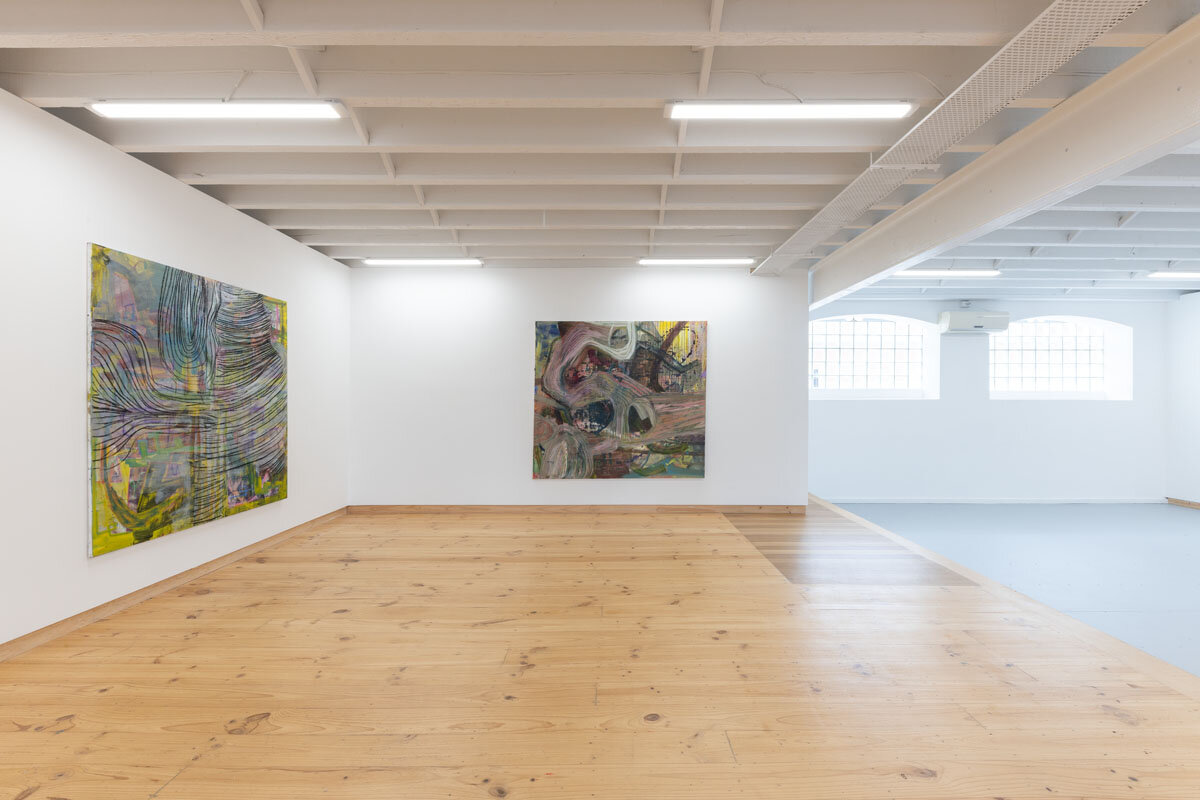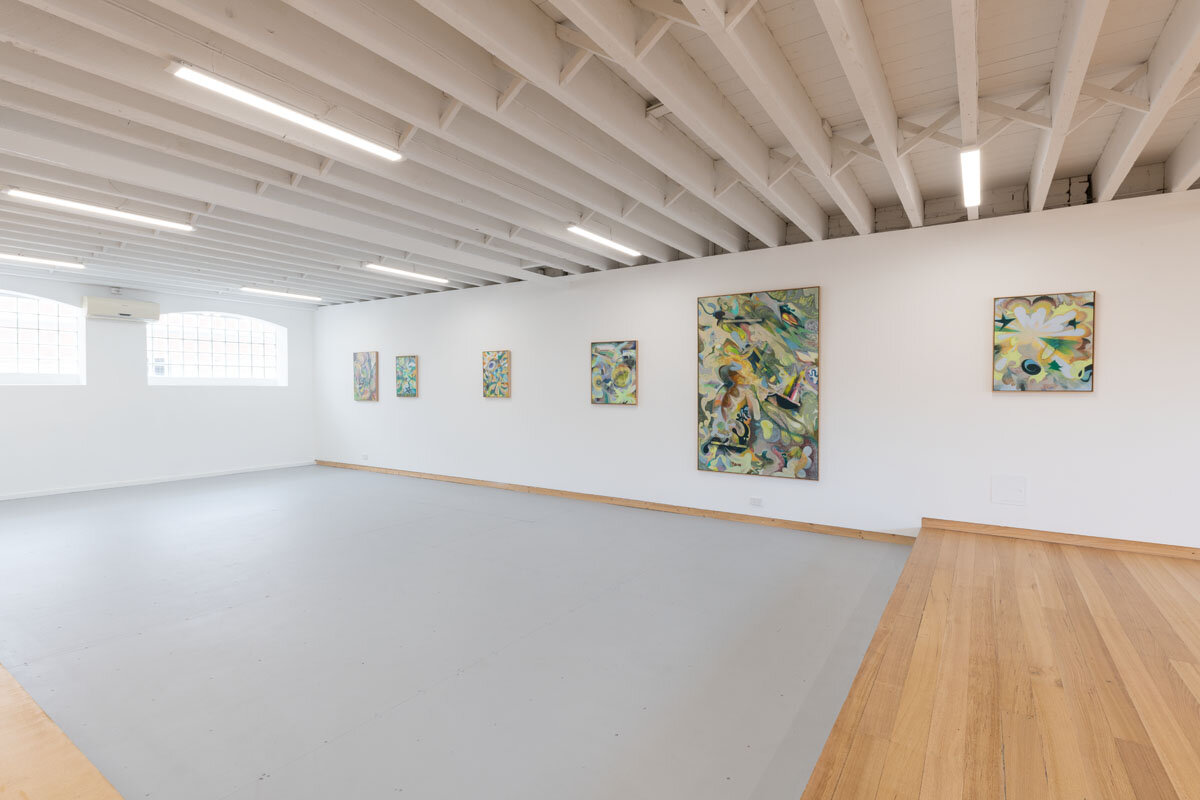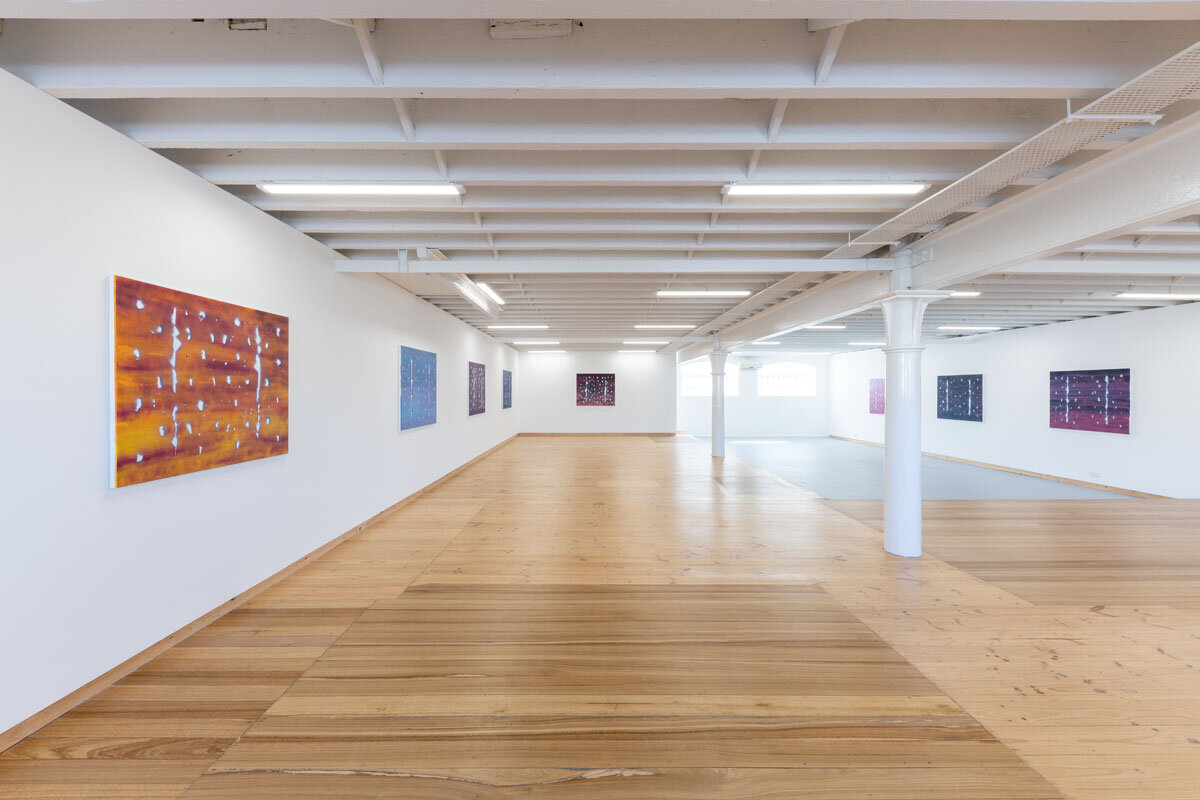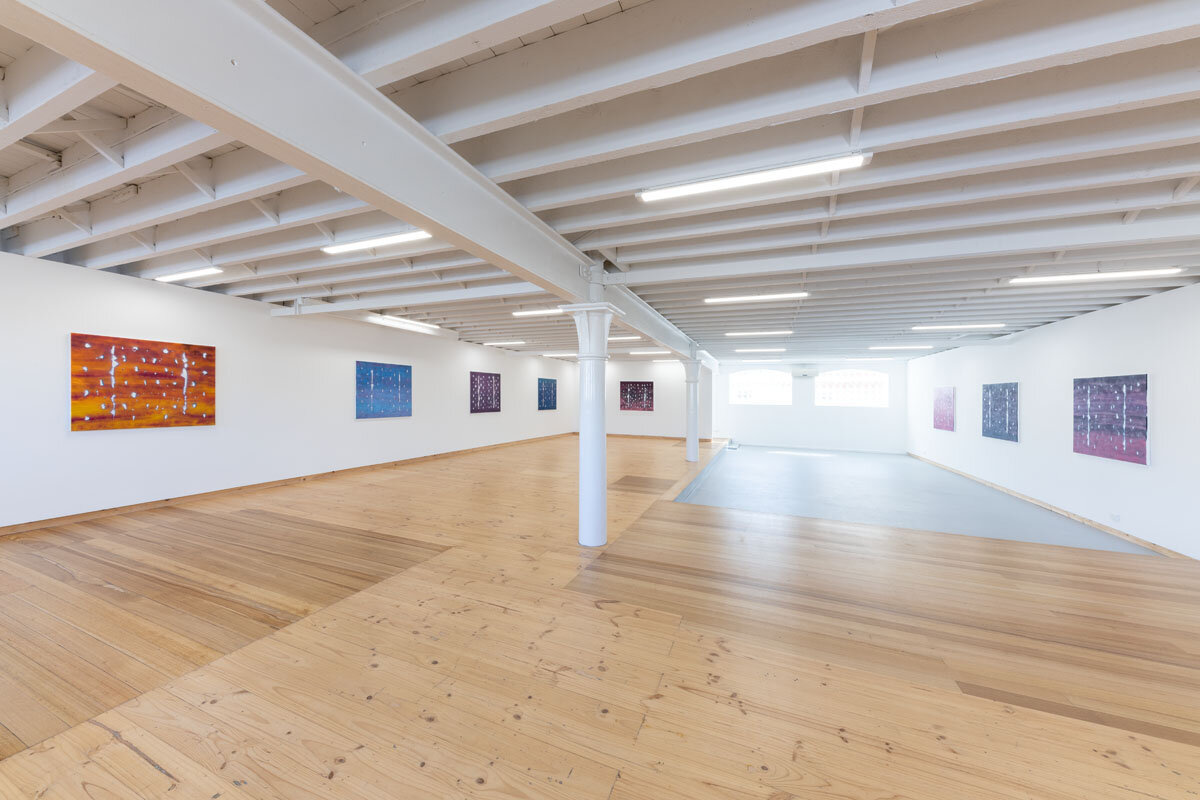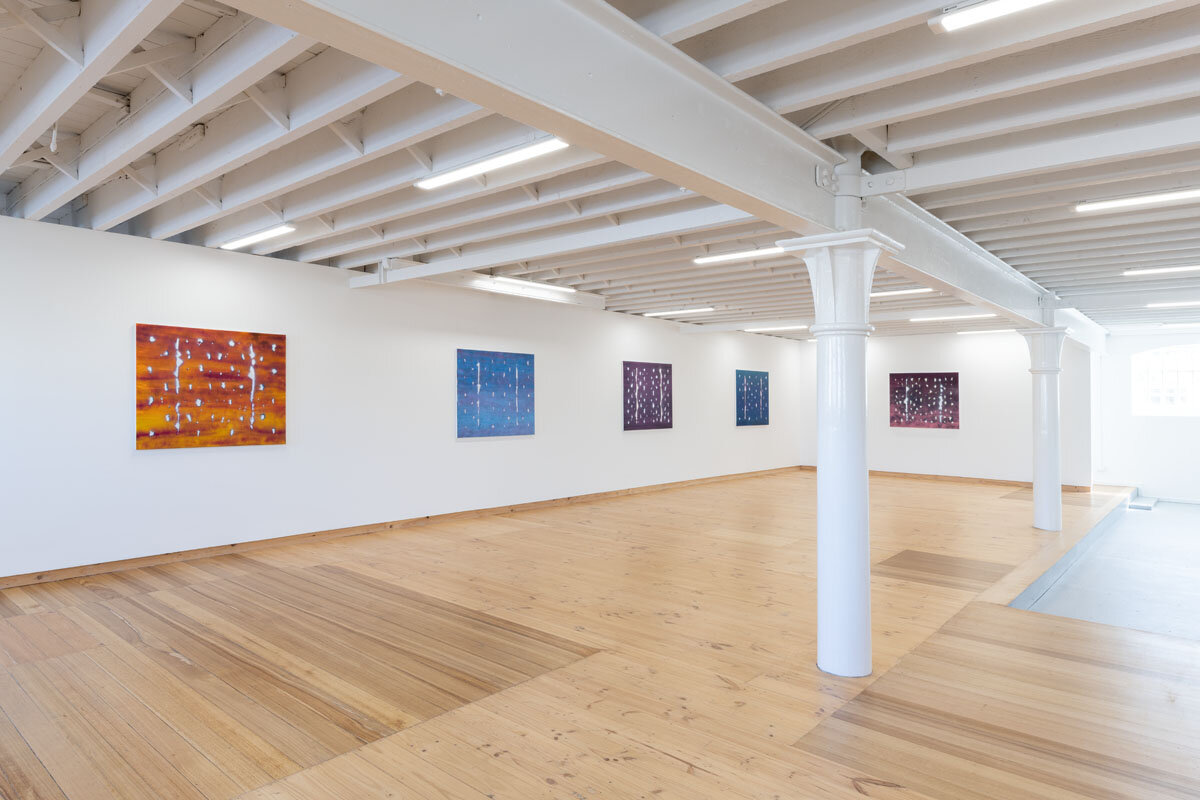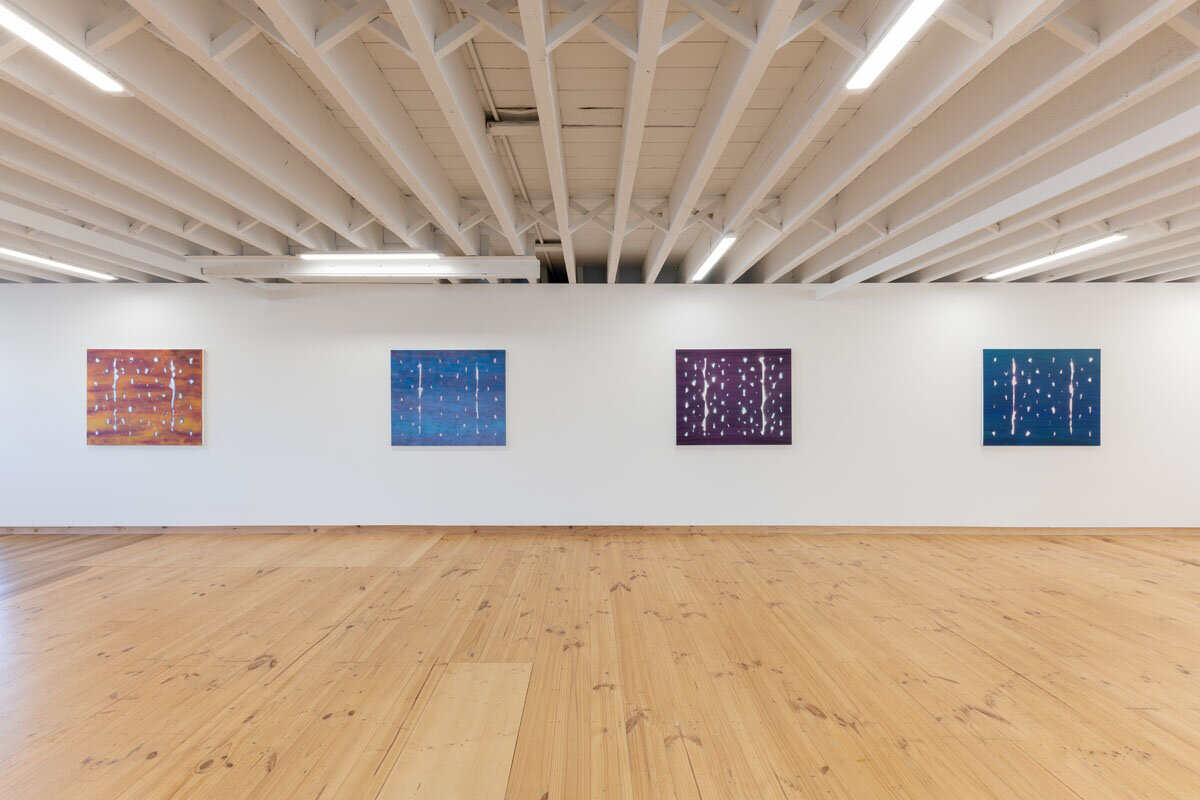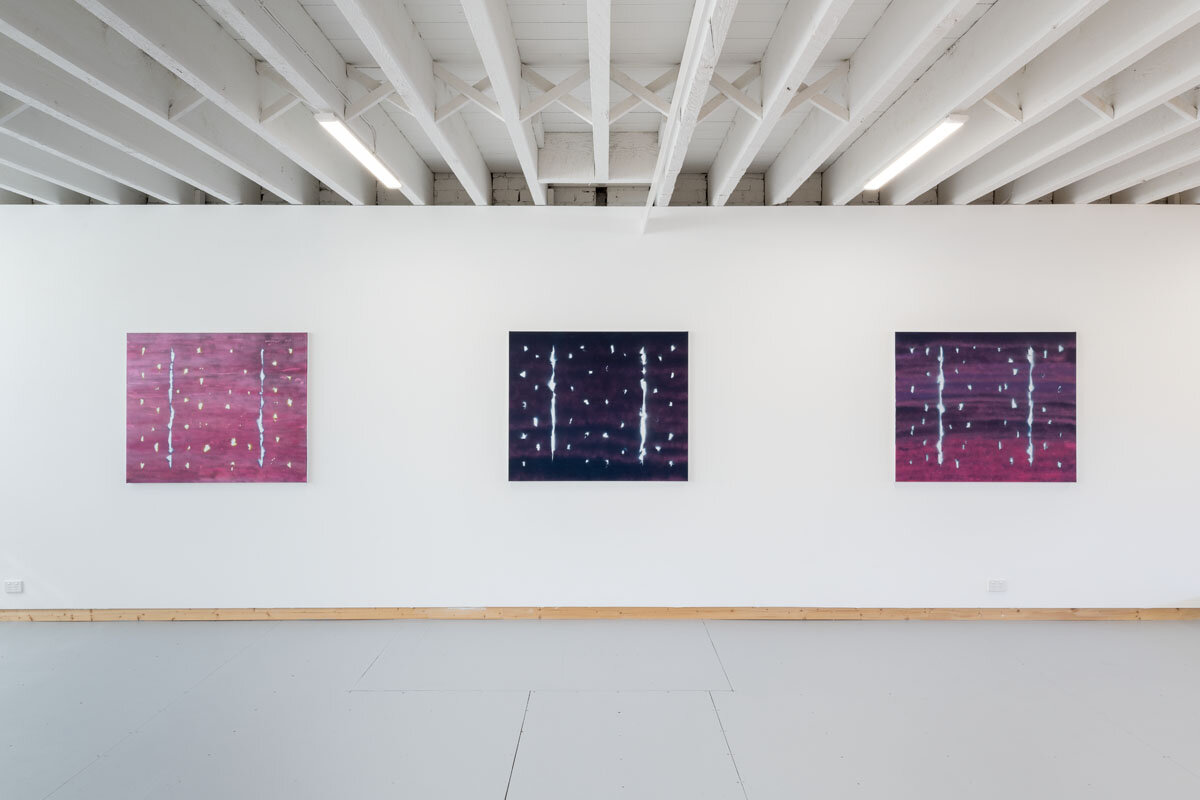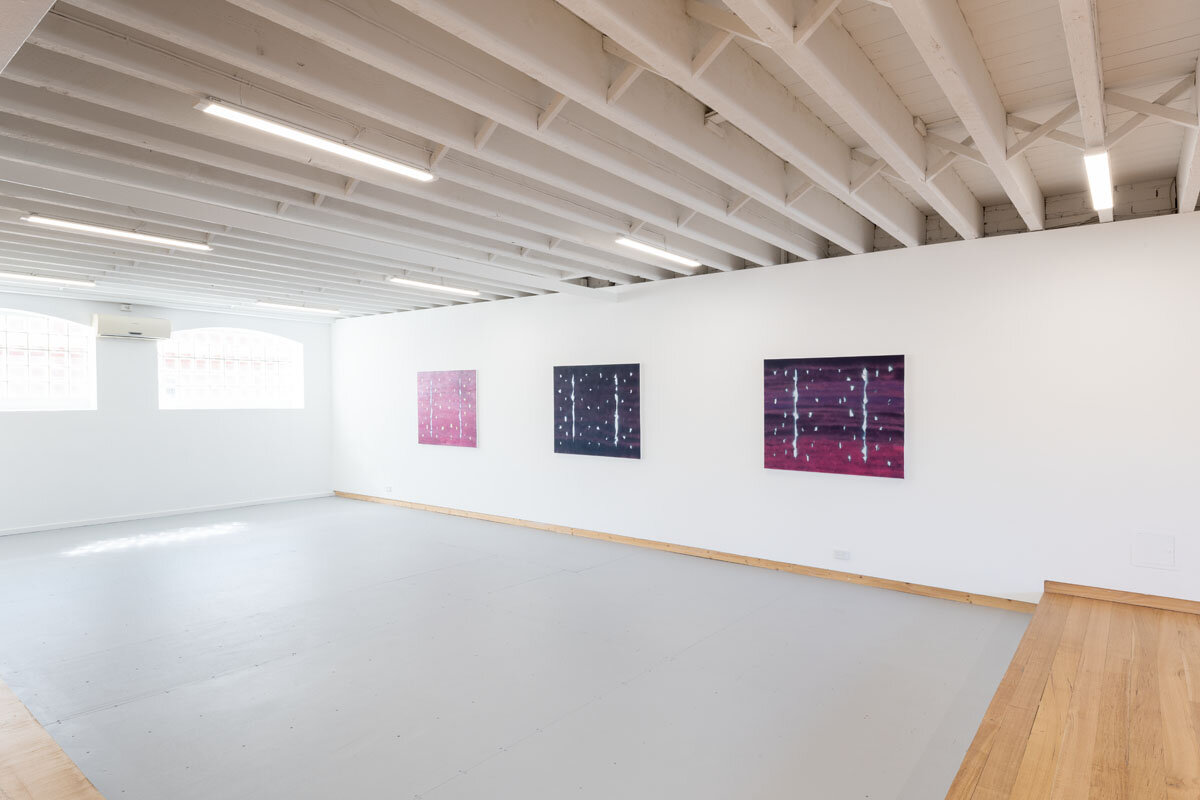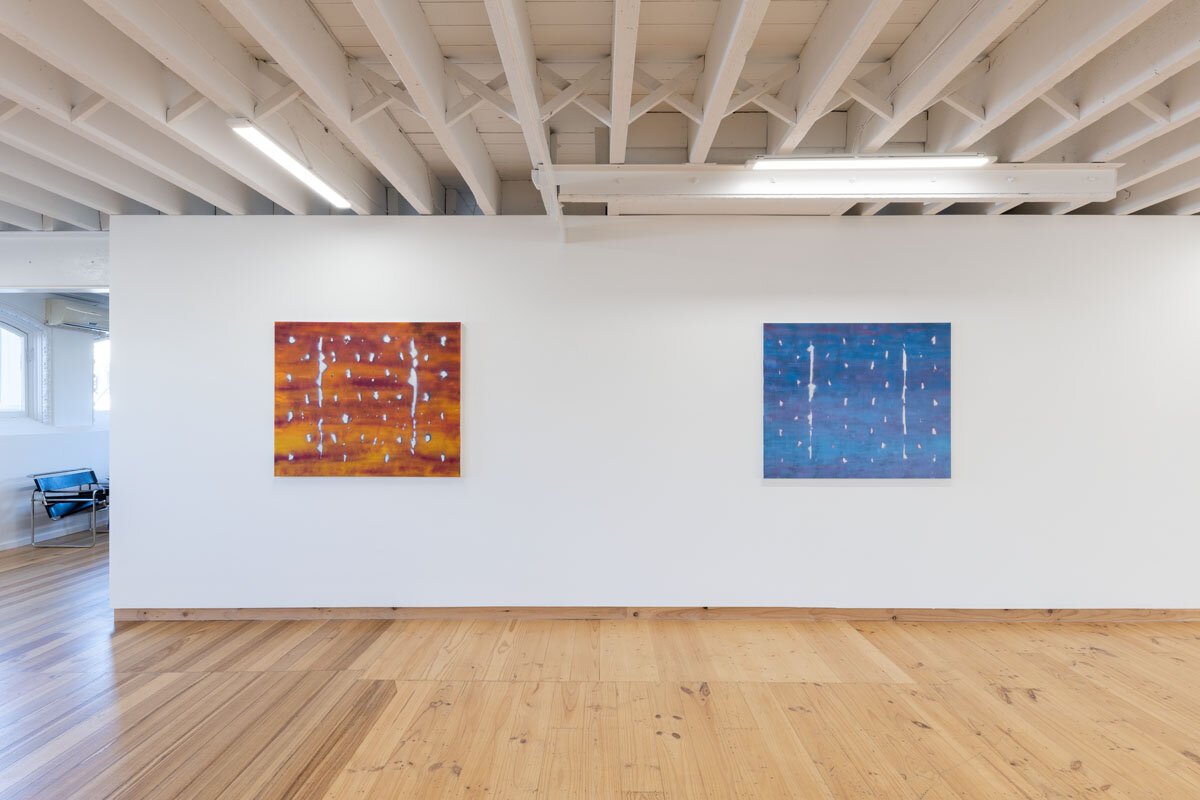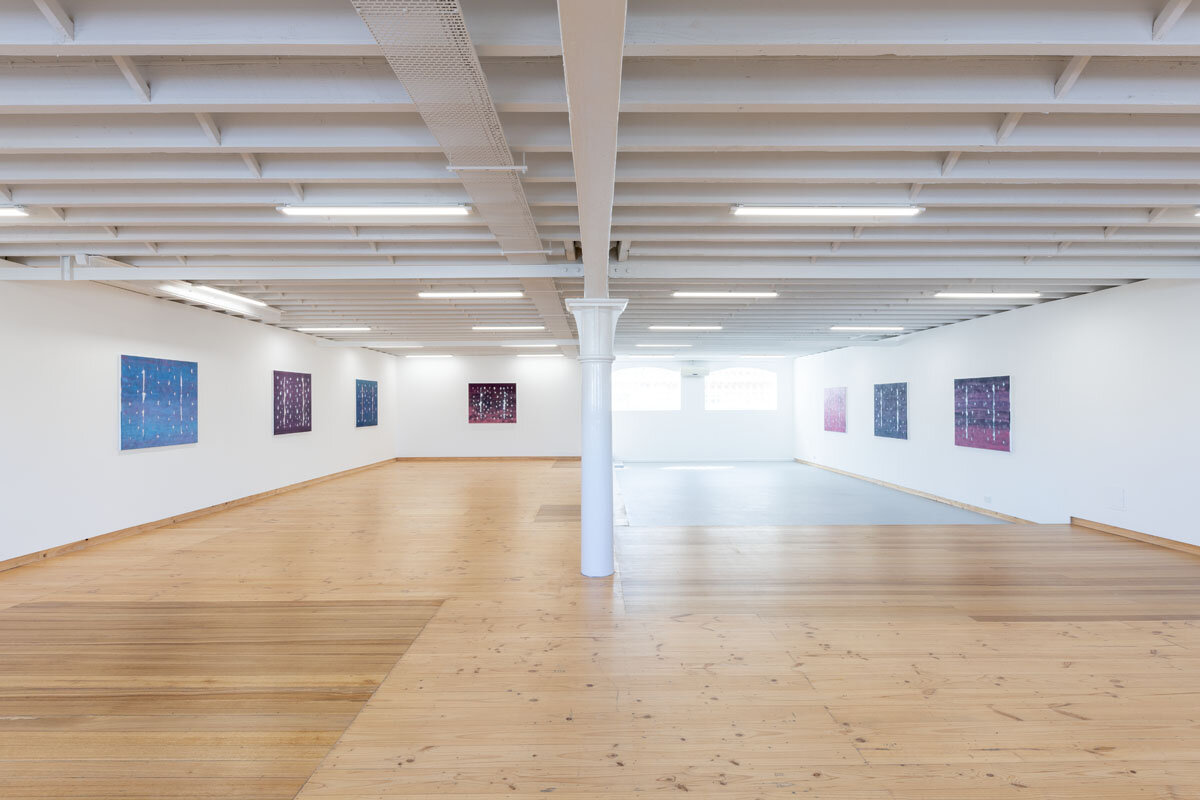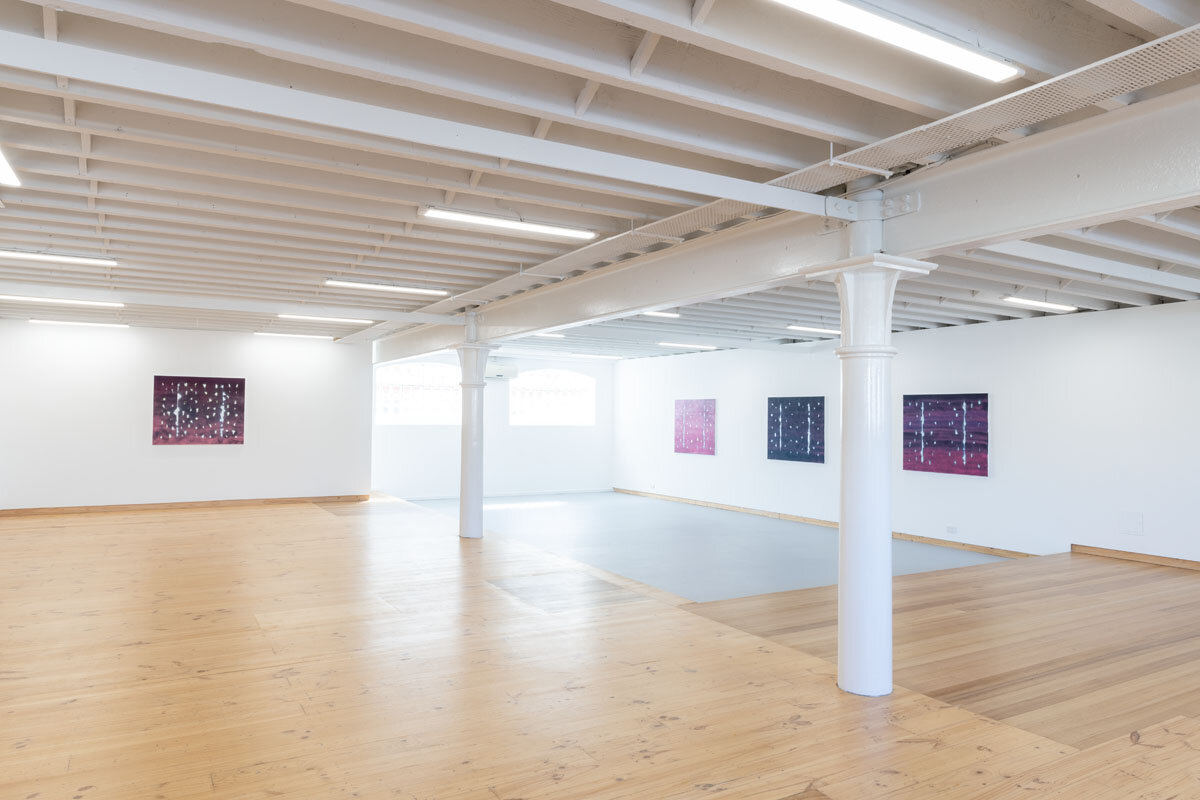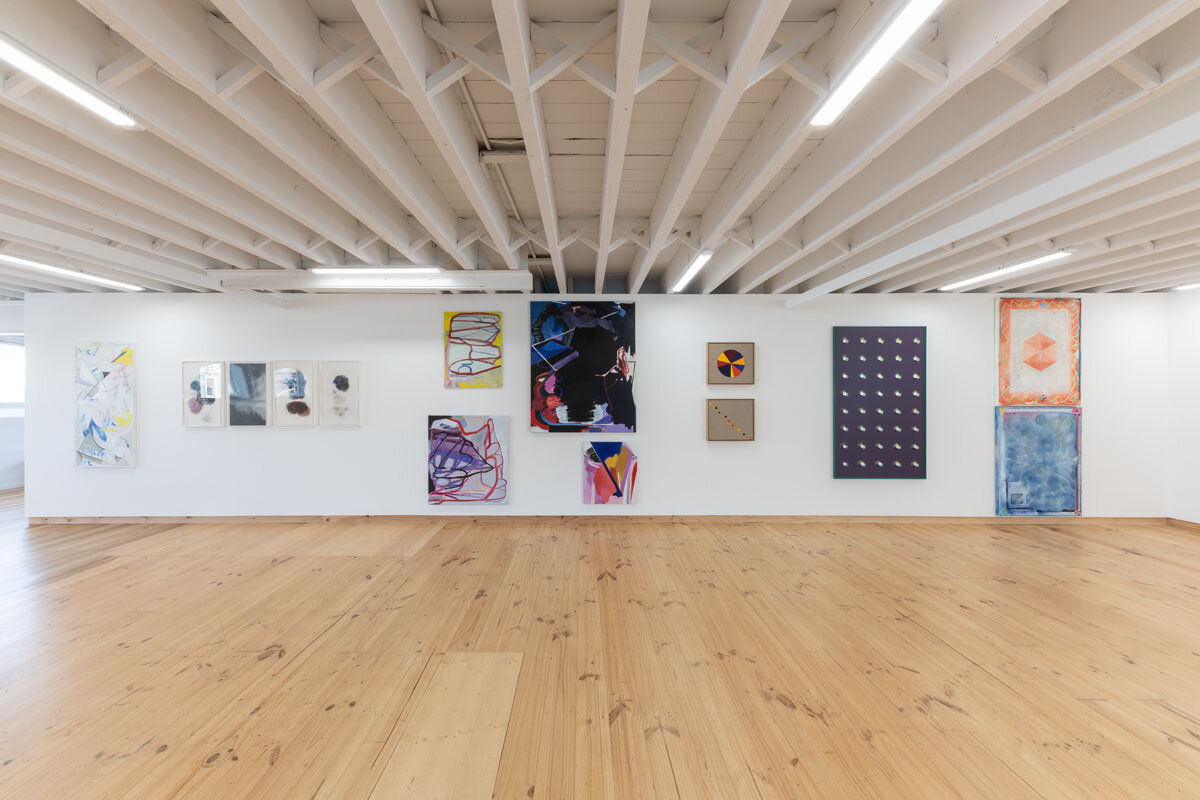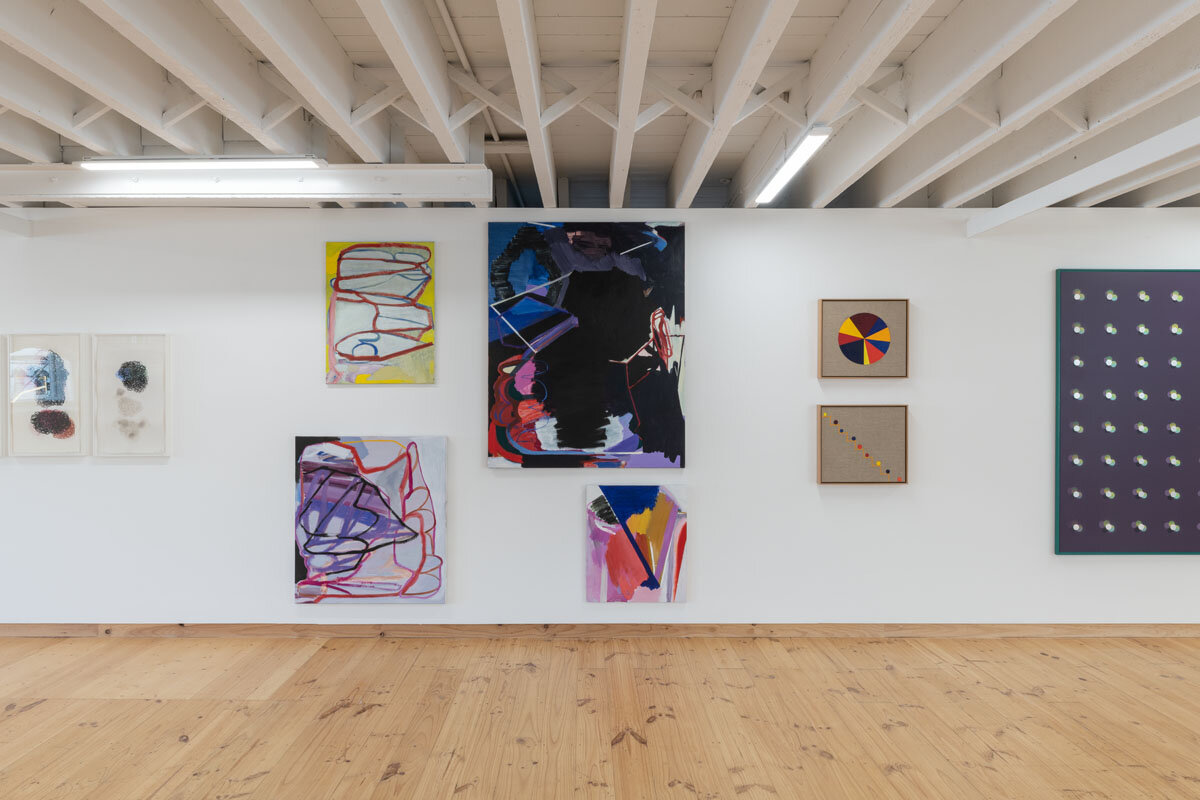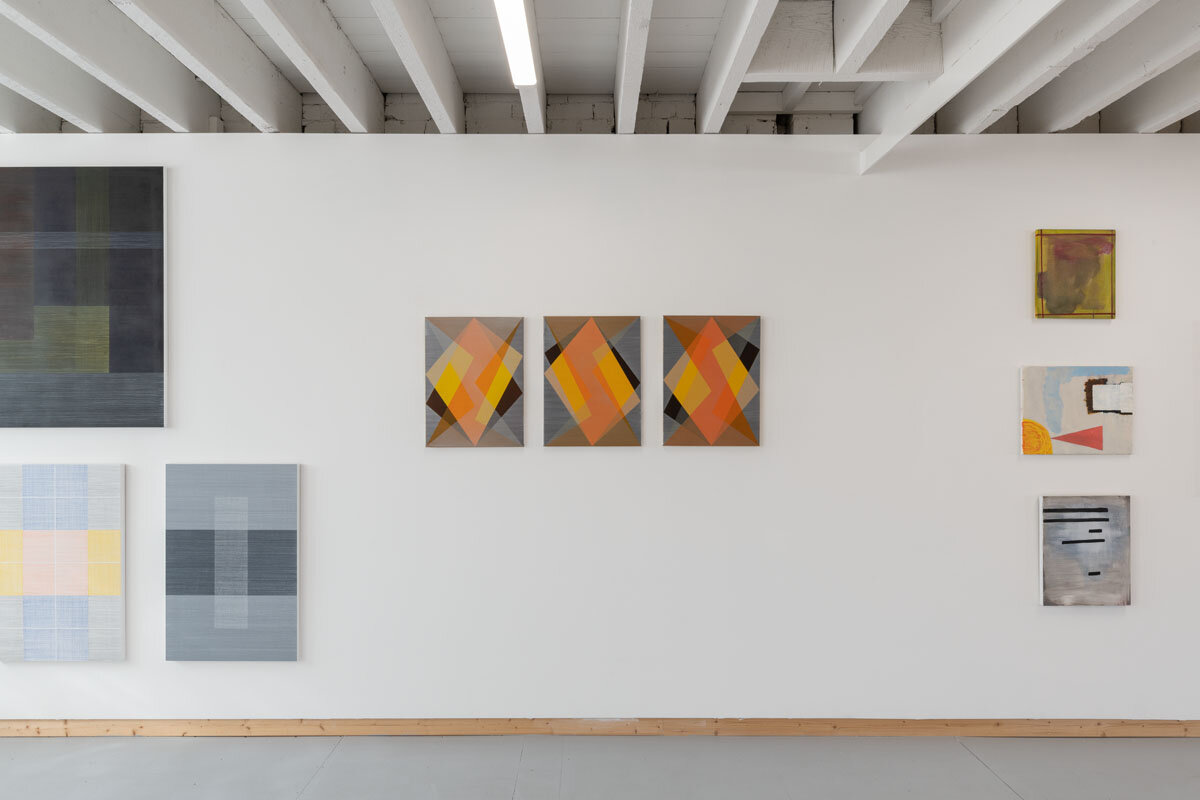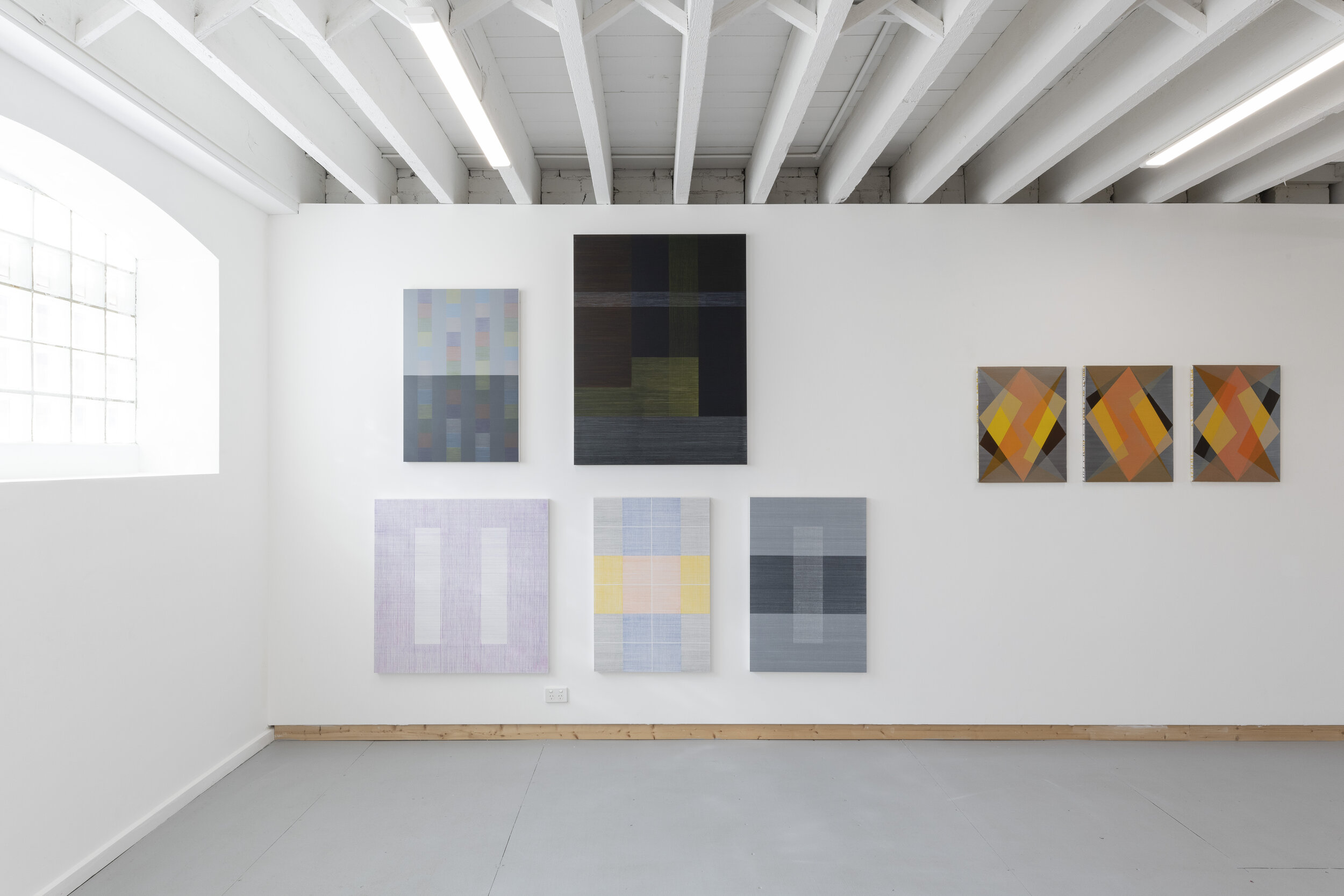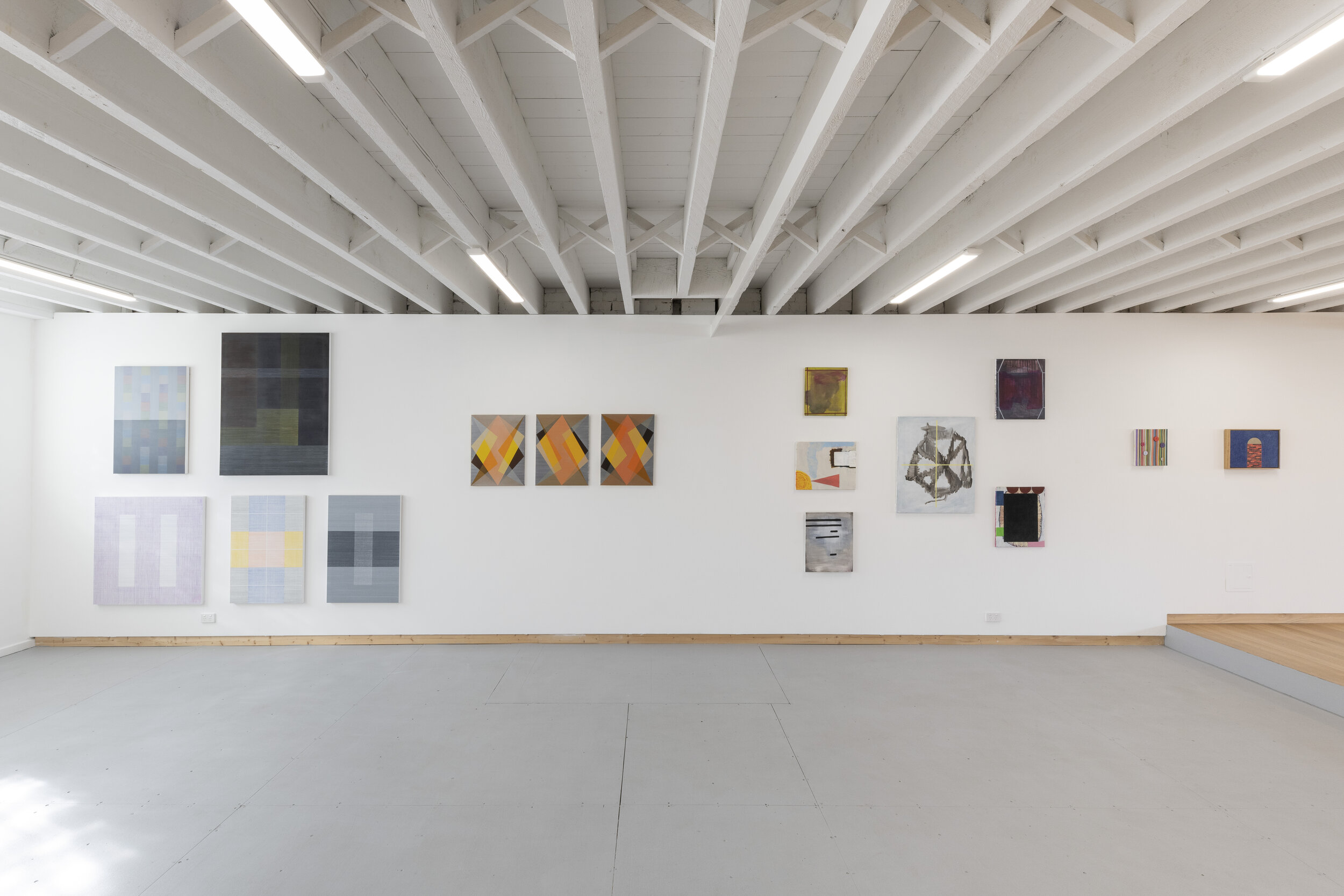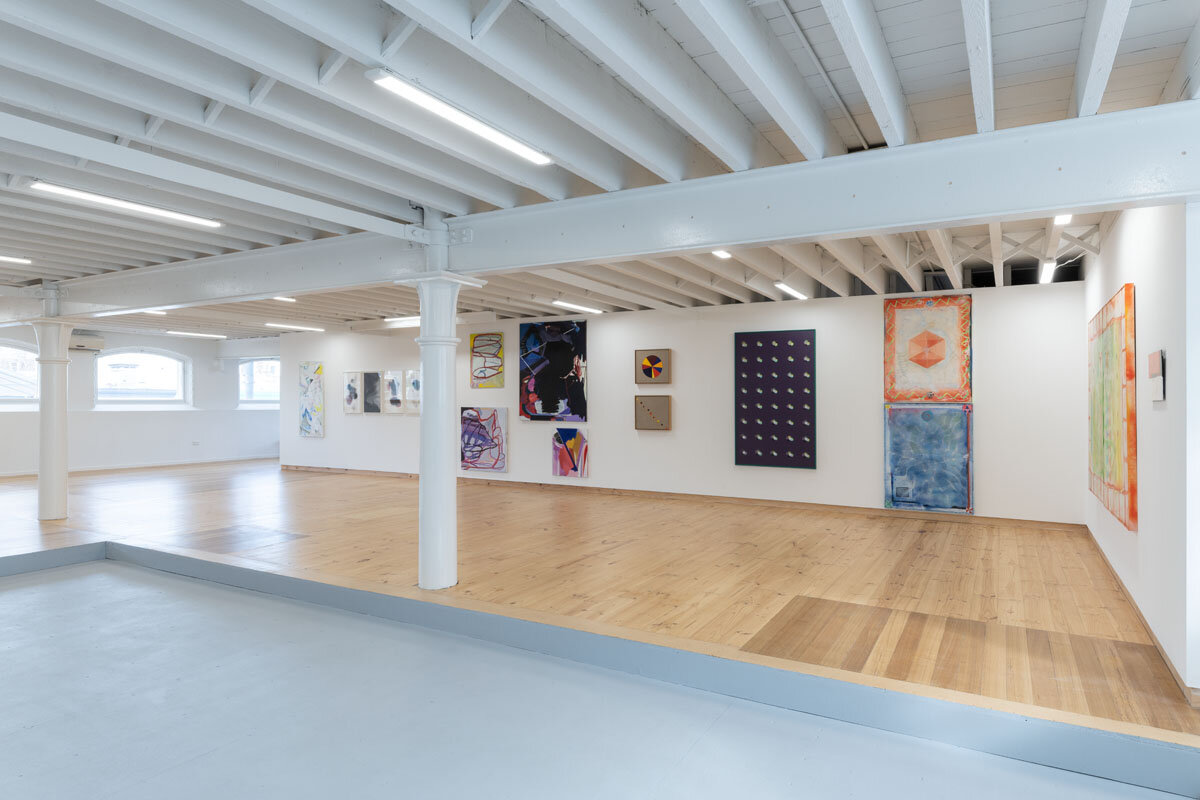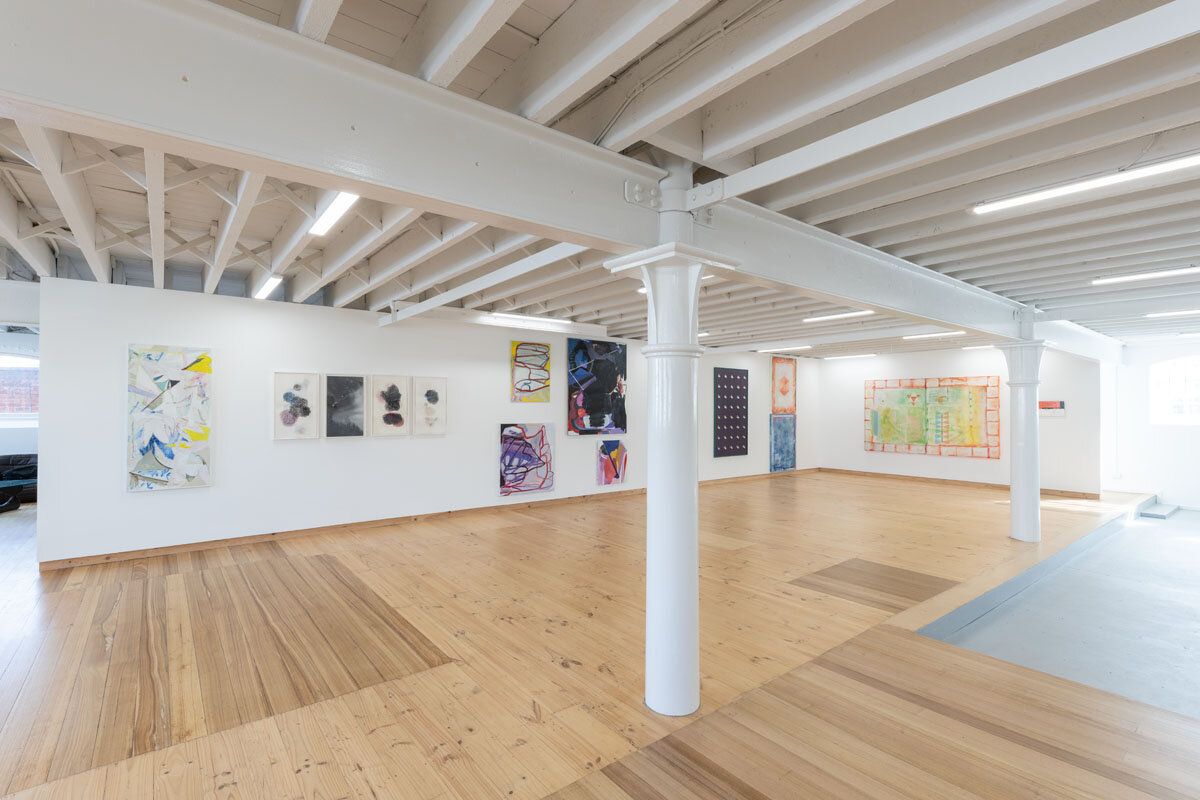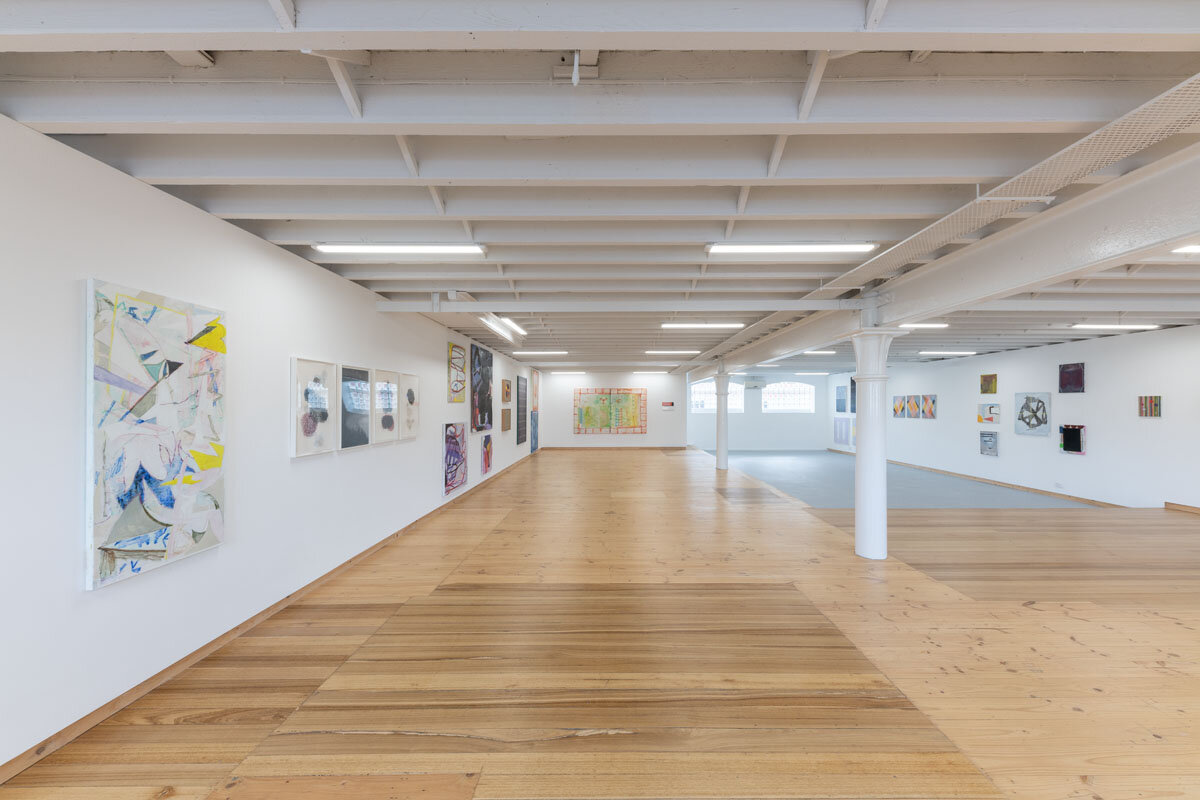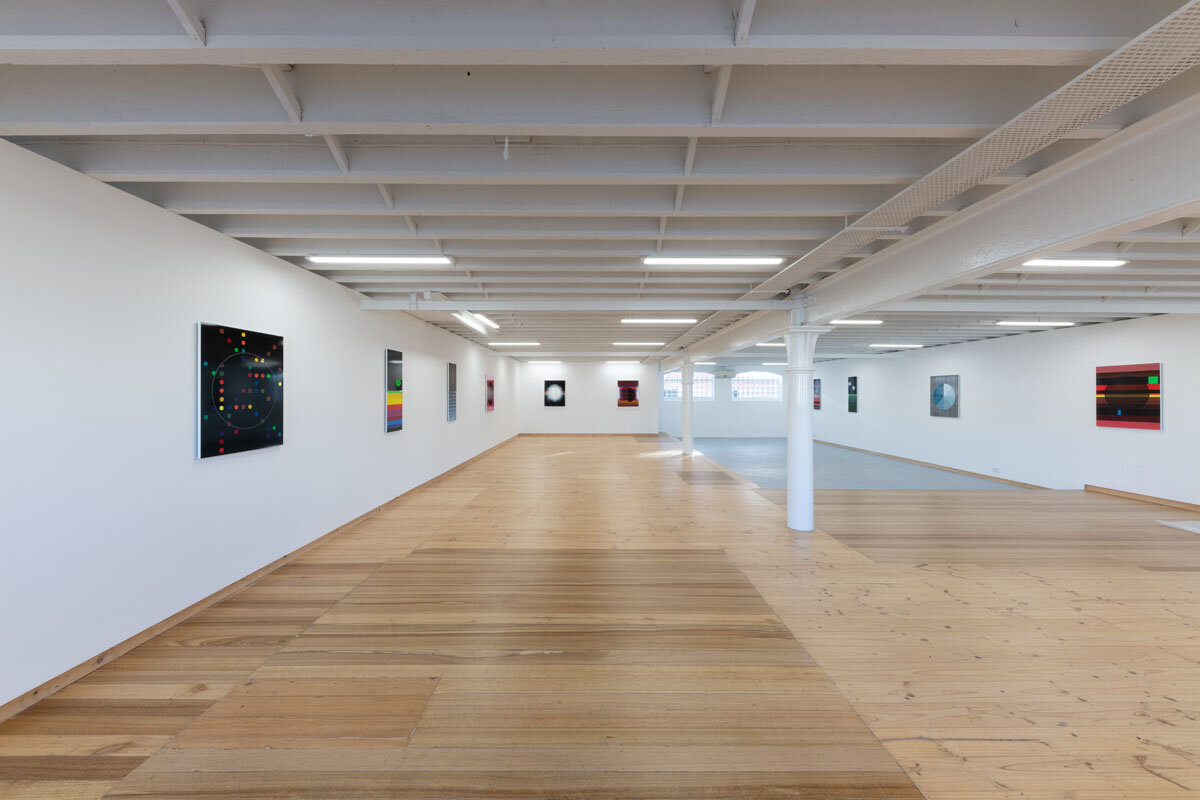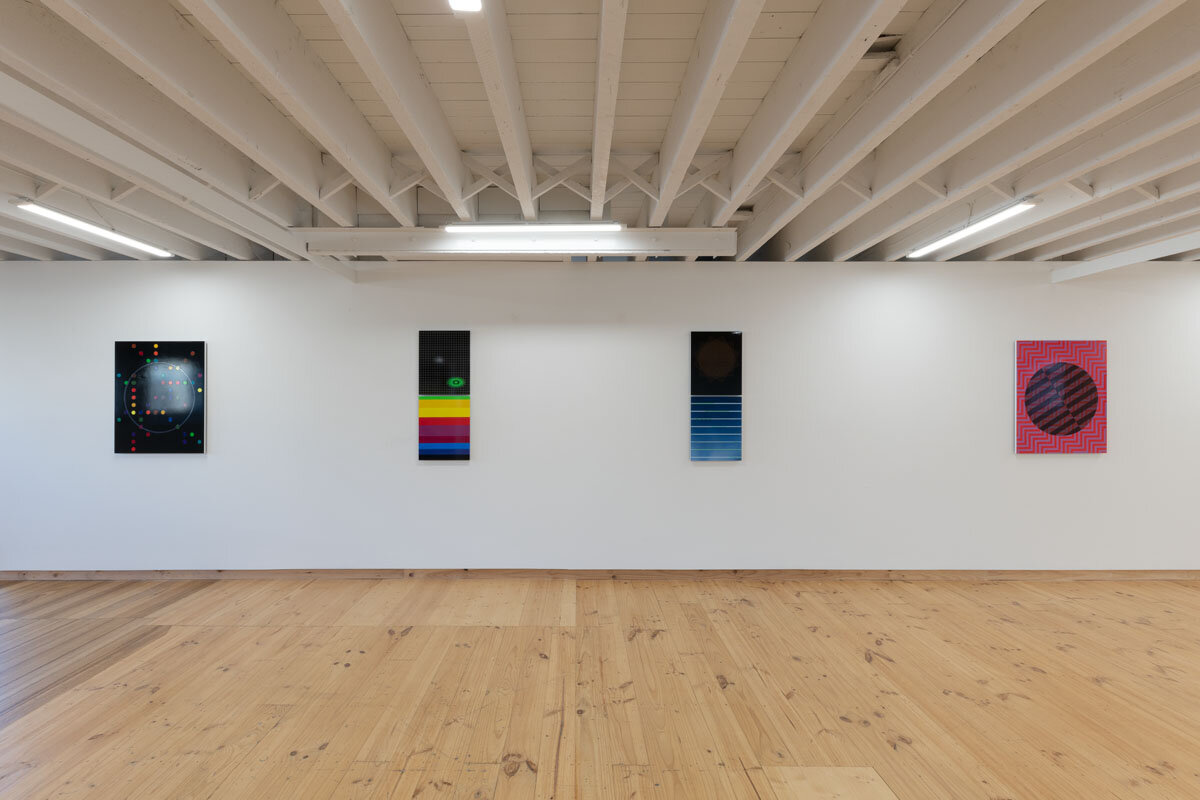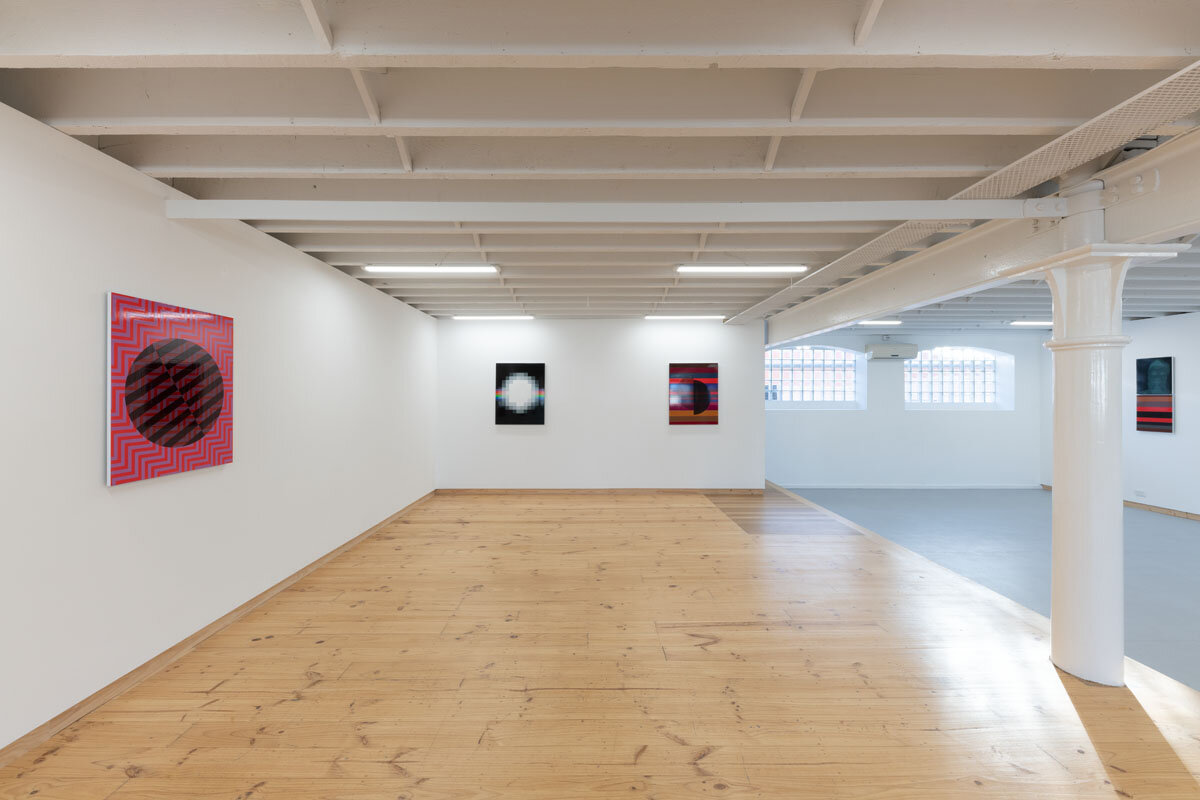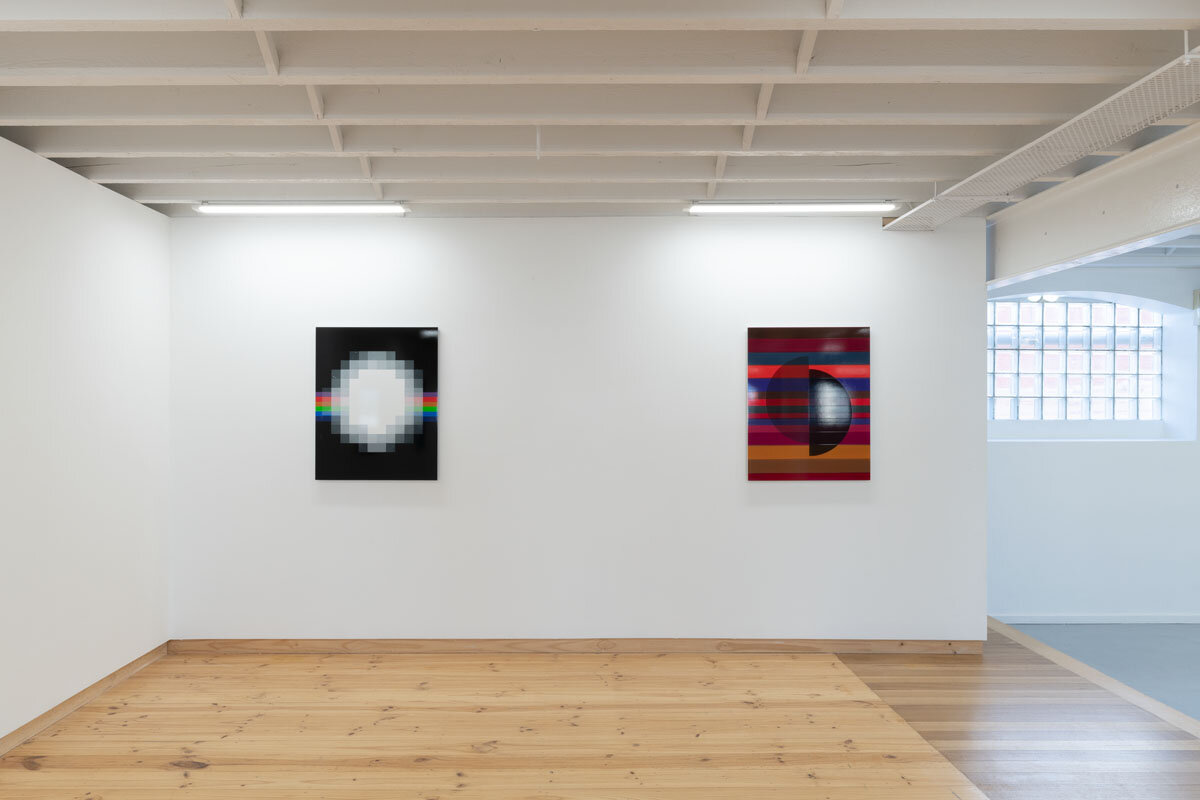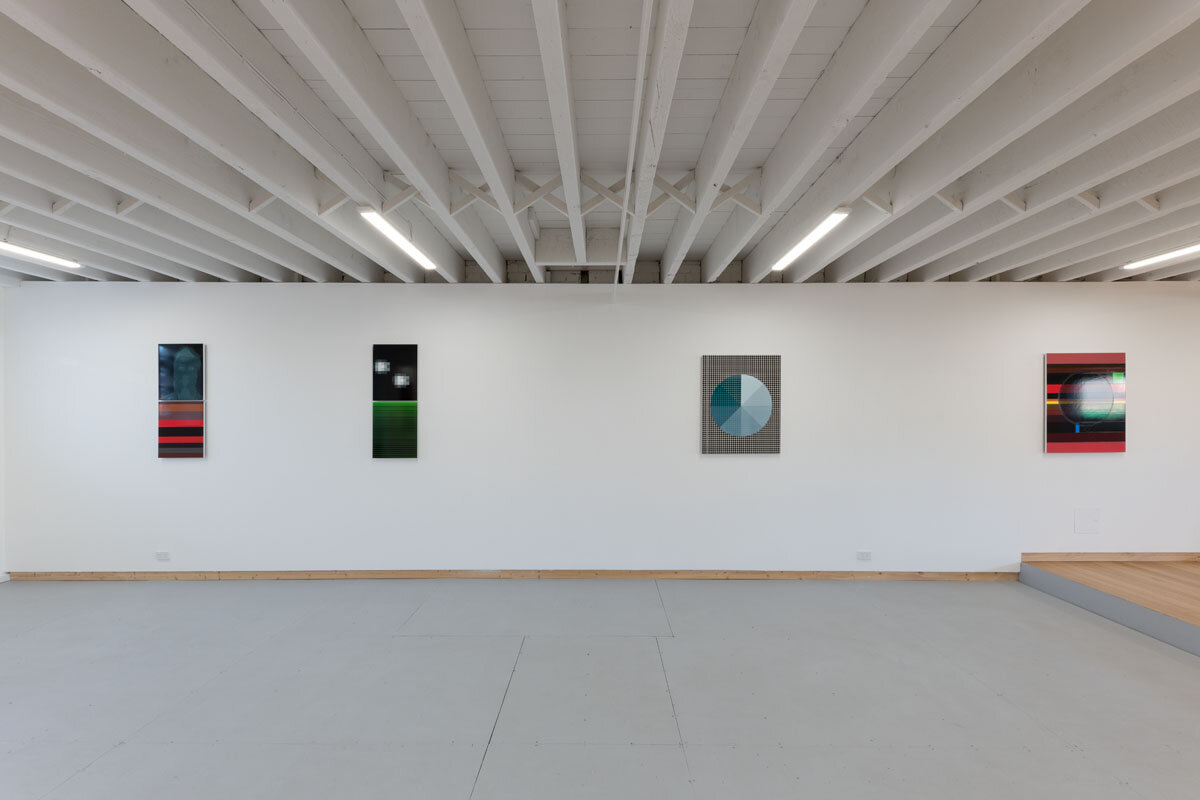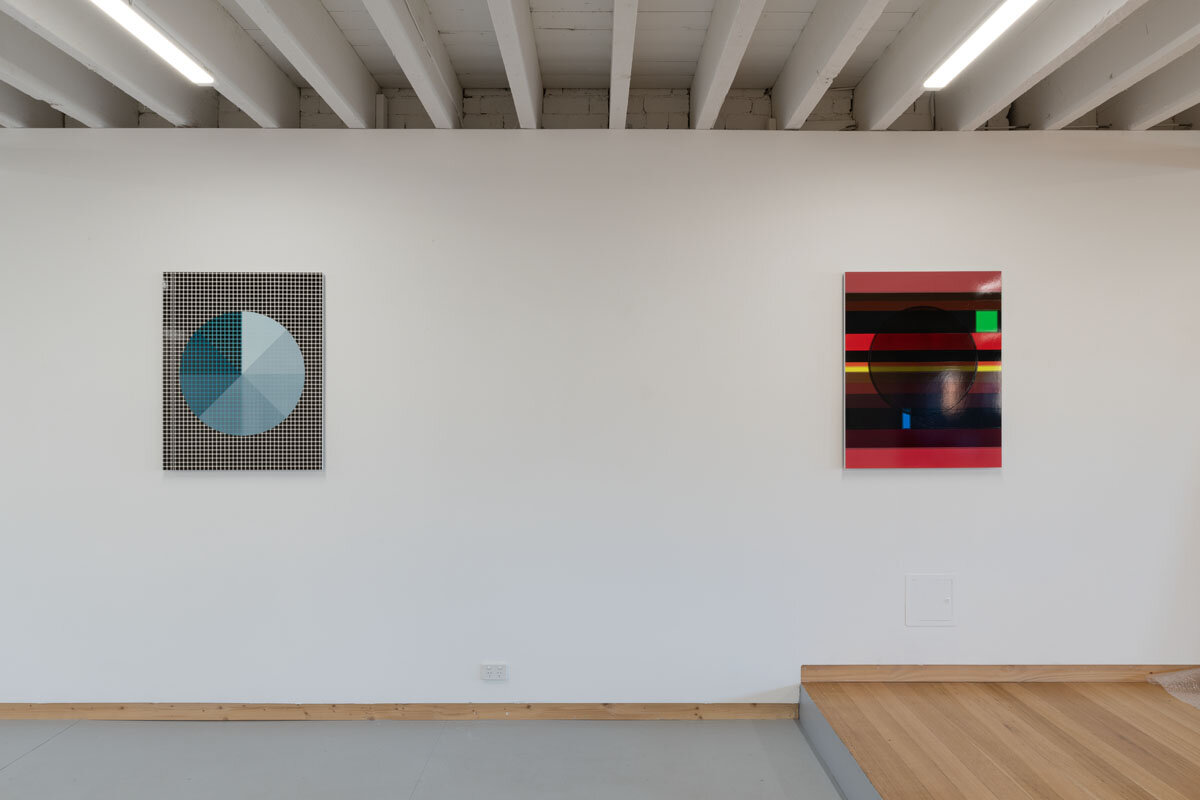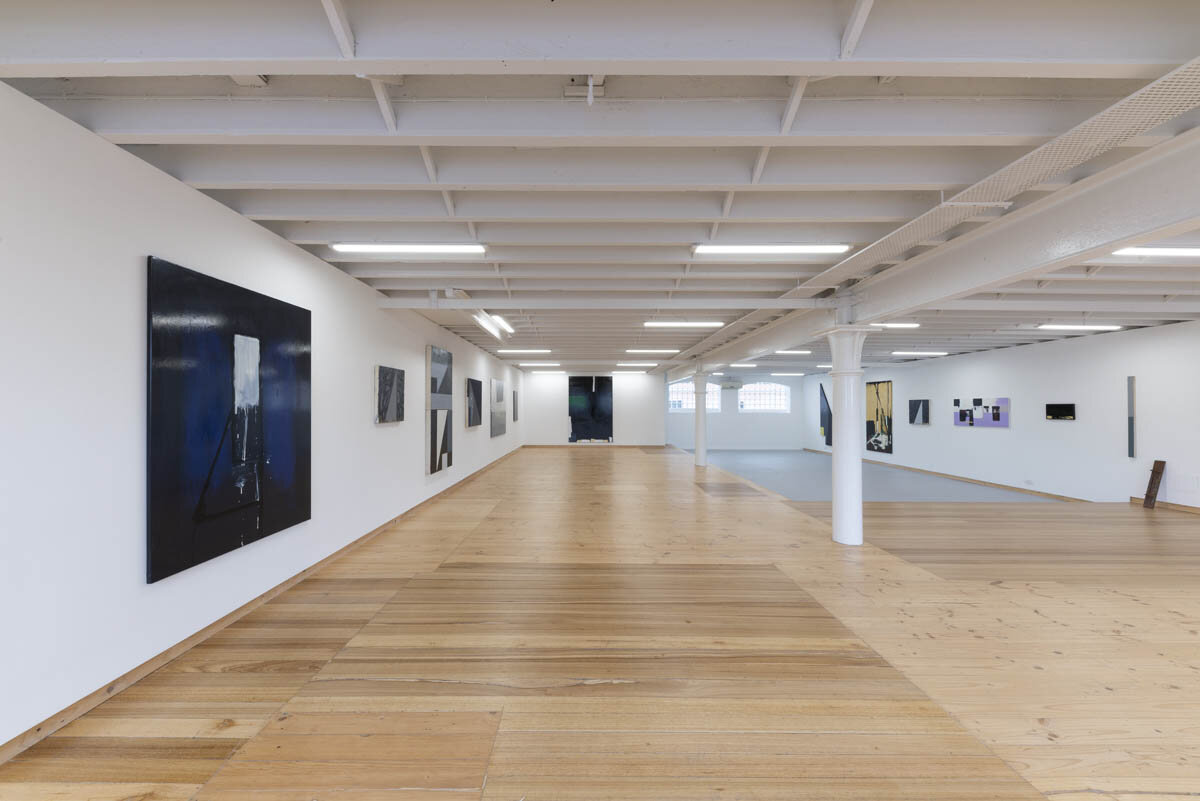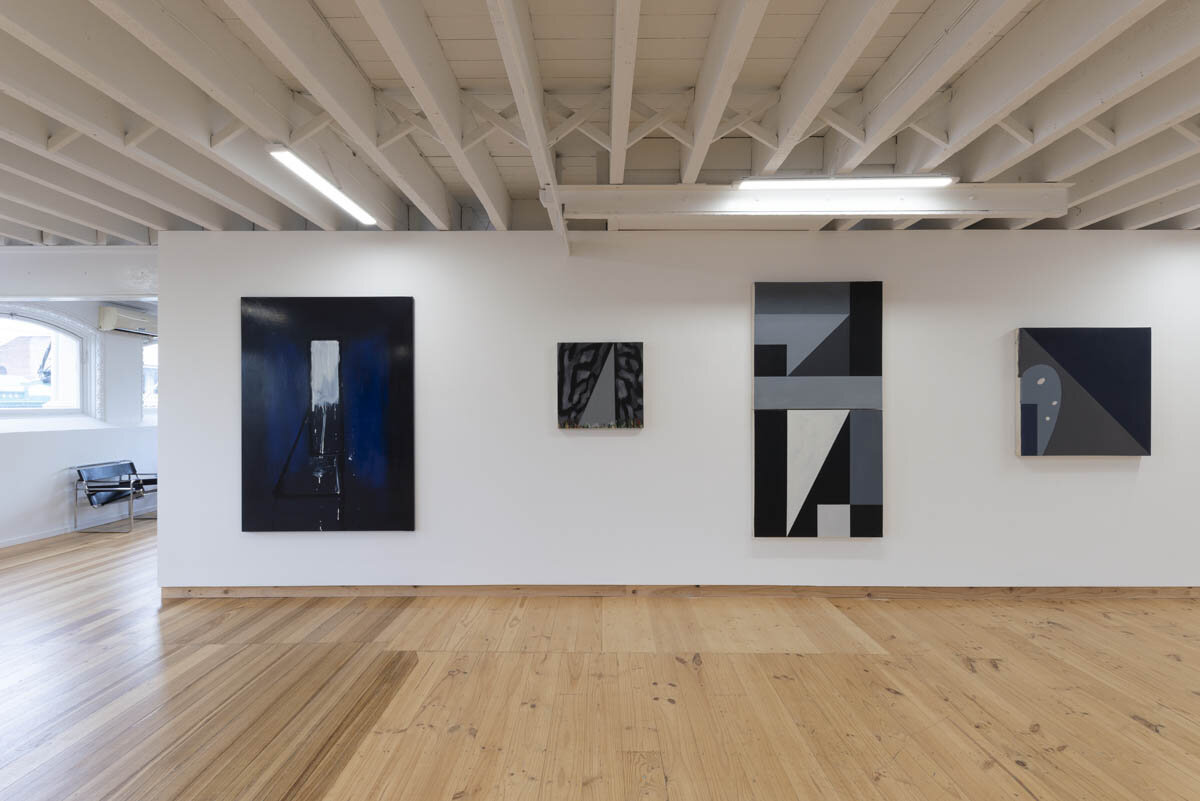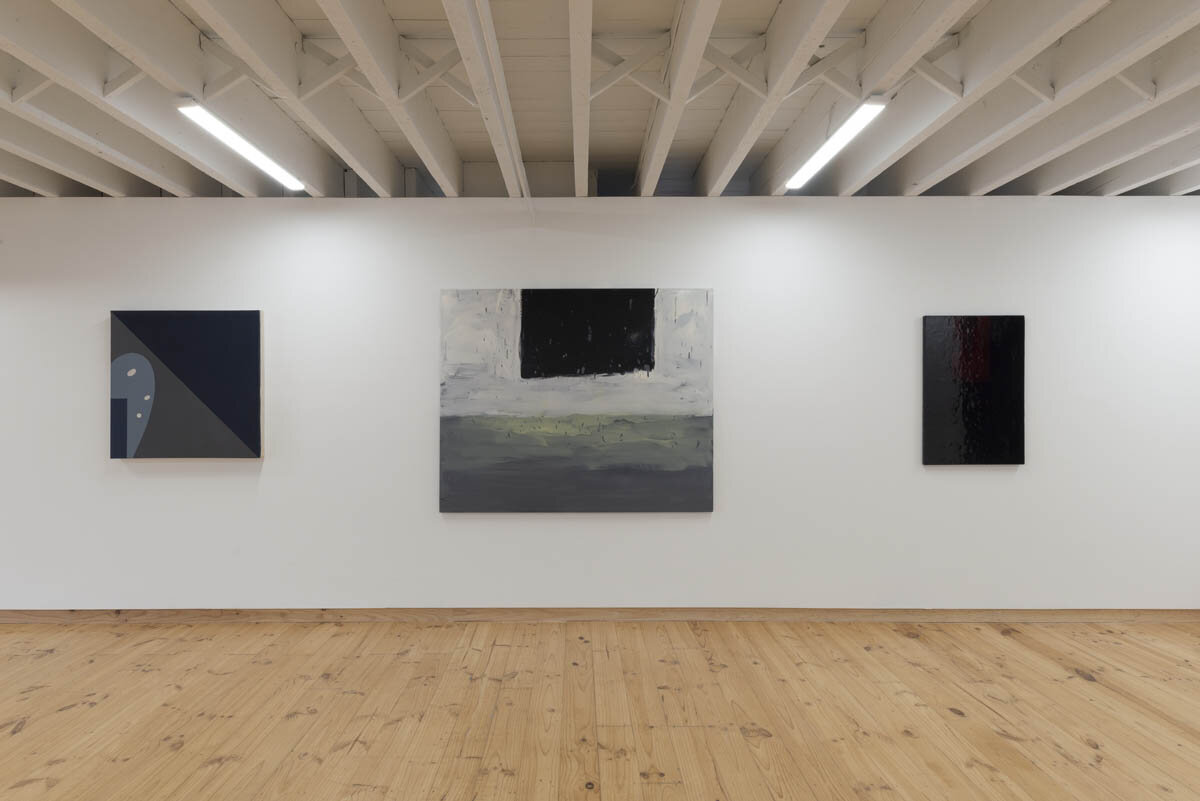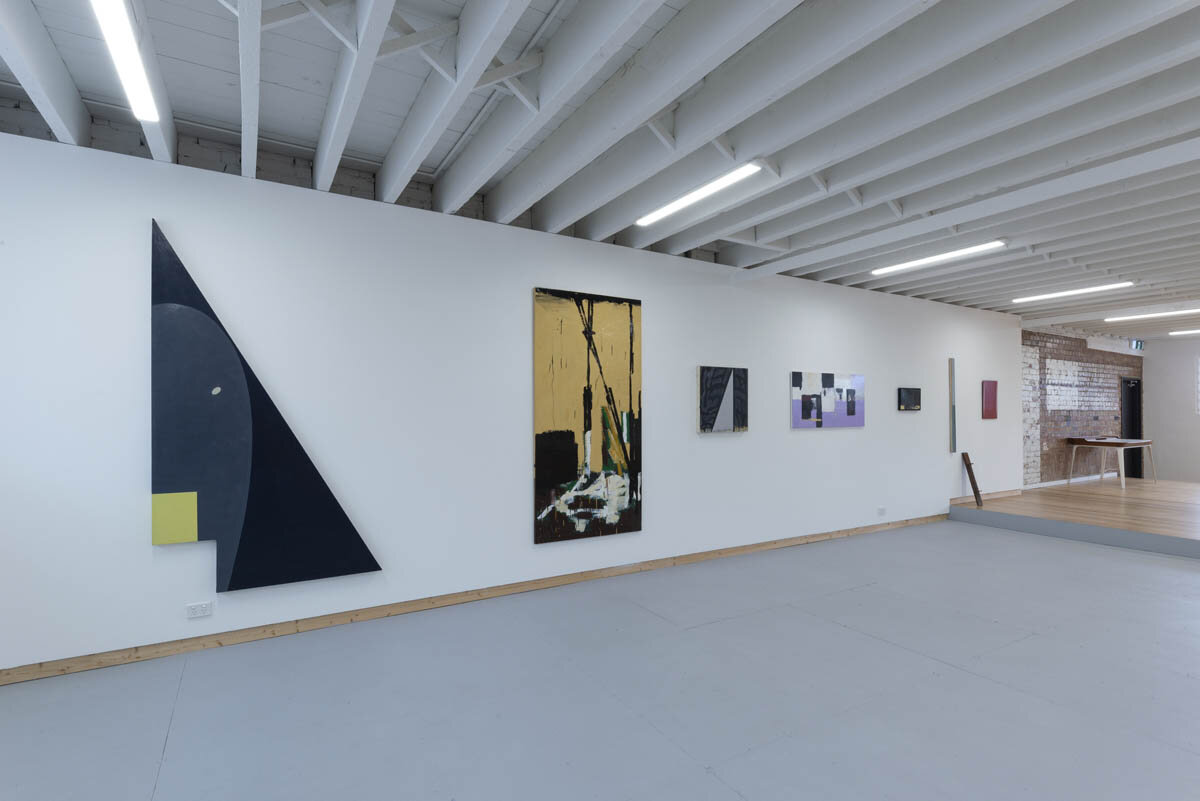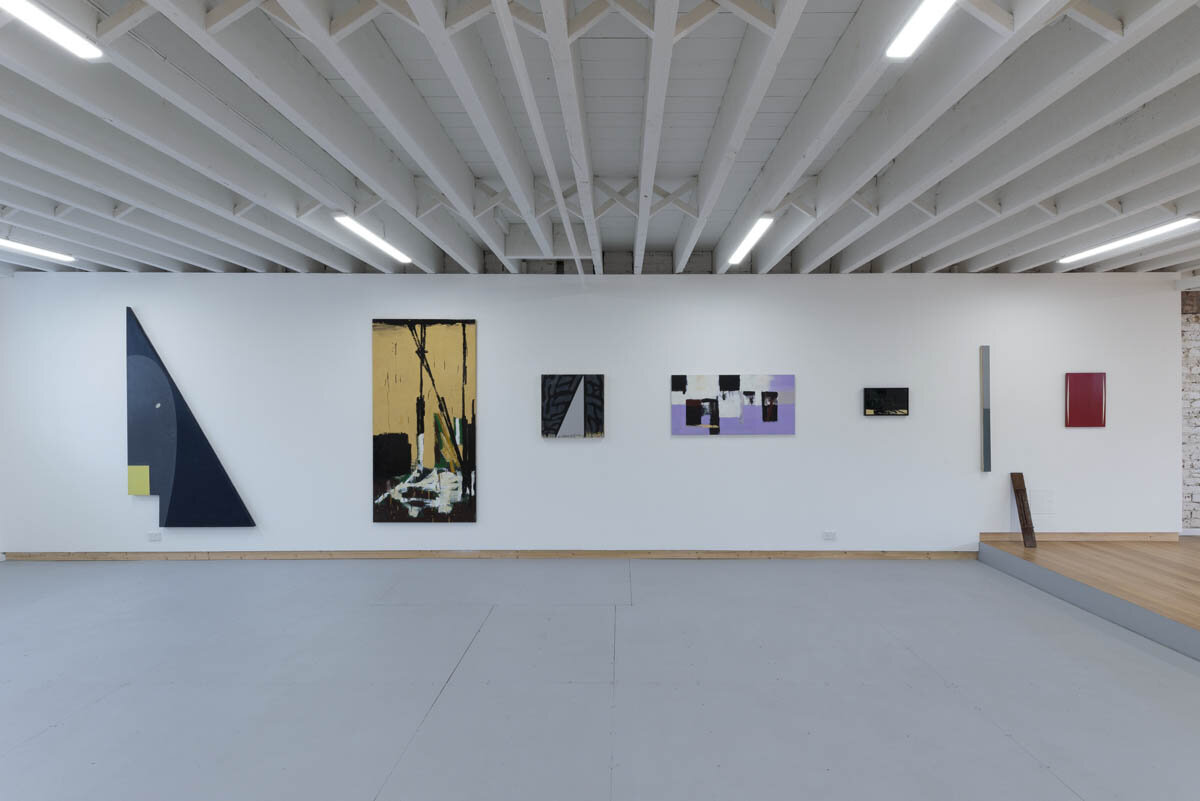THE DIRECTOR’S CHOICE 2020: LEADING AUSTRALIAN AND BRITISH ARTISTS
09.06.2020 – 11.07.2020
Installation images, The Director’s Choice 2020: Leading Australian and British Artists. Blockprojects, 2020.
This group exhibition features a selection of abstract and figurative works by important Australian and International artists.
ARTISTS:
Tony Bevan,
James Clayden,
John Colburn,
Adam Cullen,
Sydney Nolan,
Albert Tucker,
Gareth Sansom,
Peter Walsh,
what.
SELECTED ARTWORKS:
JAMES CLAYDEN: PAINTINGS - DRAWINGS - GROUPINGS
10.03.20 - 11.04.2020
Complex Translation by Adrian Martin
Art, a wise person once said, is a matter of the “complex translation of the seen and the felt to a series of visual marks on a flat surface”. That’s a mystery you can contemplate forever. For such translation has nothing to do with verisimilitude, copying, faithful reproduction. Things change, transform along the line between the seeing & feeling, and those marks laid upon the flat, layered surface.
The original impetus – that landscape, object, face, moment, flicker or flare – can be lost altogether, beyond recognition in its eventual rendering. That doesn’t matter, in the end. It is what arises, what we – both artist and spectator arrive at, which counts.
James Clayden can sometimes seem like an abstract painter. But I never, personally, find his work (whatever media he uses) to be entirely abstract. There is always the trace – sometimes evident, at other times faint – of what, in the world, inspired him to begin his complex translation.
We sometimes see a line, a shape, a nose, a post, a fence railing. Maybe that’s what they are, maybe not. The nomination doesn’t matter. What matters are the visual marks, the marking, the intensity and process of that.
Edward Colless writes: “It is something else – that com- motion of vague and fleeting sensations … I loiter among vagrant, half-formed perceptions, bewitched”.
It seems to me that James begins from something at once very concrete (a sight, a sense-impression), and some- thing cloudier: a feeling, an association, some obscure reminiscence that has been sparked within him. It is all those things at once that he seeks to translate. Not to disentangle them, necessarily, but certainly to convey them to the canvas, page or screen. Maybe he himself is not always completely sure what this process is all about. But it drives him.
Sometimes, I feel, with a sharp pang, that I grasp some- thing very specific in his pictures. Maybe a person I know (who we both know), a film scene that I too have seen, a precise location where I have stood and viewed something from that very same angle. There are place names indicated in the titles: Hampstead Heath, Primrose Hill. Have I ever been there, or are these pictures just making me imagine it was so?
I never attempt to verify any of this with James, because I may be entirely dreaming it. But what’s important is that his art can incite this game of fleeting projection and recognition.
The fleetingness is what matters. The dissolution and rebirth of the trace. The loss of a stable, consensus referent; but also the finding of a personal point. Just for a moment, before it vanishes again. The complex translation that takes the artist down one path, and the spectator along another, around the same work.
There is truly a hallucinatory aspect to immersing your- self in James’ work; that’s certainly my experience of it, at any rate. Dark patches, shadow, pools of night. Outlines are blurred, and are plunged into amorphous masses. The tops of trees shimmer and dissolve into each other. Square objects – they could be anything – rise out of the ground, but also disappear into it. Faces are creased, folded, their features unaligned.
The eternal mystery of the horizon: is it a thing, existing in itself, or just the interval between other things, land and sky, earth and clouds? The horizon is the line that is not a line; yet what work it can do inside an image.
The hallucination can be three-dimensional, 3D. Layers and smudges on that surface. “The skin of another”– where skin is translated by folds and swathes of coloured paint. Depths emerge but then find themselves, once again, brutally flattened, cancelled. James is always fighting with the flatness, resigning himself to it, then making it “pop”, somehow, in and for our eye.
The incessant movement in his film and video work is never far away from his paintings, drawings, and other as- semblages. Yet his films and videos, too, wage war, stage a dance, between the flatness & stasis of abstraction and the fullness of actors in space – a space of theatre, of mise en scène, another medium in which he works and plays.
James is often involved with the telling of stories in his work. But the stories are cryptic. Suggested, elusive, allusive. Memories crossed out, but still visible, struggling to be seen and heard. Ghost paintings. A vertigo of the visible; an inaudible, murmuring soundtrack.
I experience a kind of synaesthesia from James’ art. While I stare, I am hearing the sway and rustle of those trees; and also the scratch and bustle of his own painting- drawing tools. Things are returning to me – even if they are not the same things that James himself began from. Voices speak, whispering poetic fragments in my head.
Ruins of texts, of the sensations and feelings they gave me, once upon a time. Shakespeare, Cassavetes, Sondheim: I know they are all, somewhere, in James’ neural memory banks, and sometimes also in mine. But convergence and divergence are the same, ultimately, in this game. He can start from a mountain and end at a movie; I can go in the opposite direction. The translation shuttle is two-way, and eternal.
Art, the reception of art, is the crowded, suddenly fro- zen, eternal moment in the middle, in medias res. We are caught between things and feelings, objects and their metaphors, memories and their stories. Stranded between the host language and a newer language to come. A series of visual marks on a flat surface returns us to the seen and felt not the original thing seen and felt, but something else, something that is coming into being.
Something stirring in the darkness and in the light; something flitting between the lines and the outlines. The marks made on our bodies, and our hearts.
James Clayden’s art, in all its forms and manifestations, is the art of infinite suggestiveness.
Adrian Martin is an associate professor at Monash University, and a film and arts critic.
SELECTED ARTWORKS:
DOBLE & STRONG: THE INEVITABLE
11.02.20 - 07.03.2020
Blockprojects Gallery is pleased to present Doble & Strong, The Inevitable.
An exhibition celebration 10 years of artistic collaboration.
DARREN MUNCE: TIMING & LIGHTING
12.11.2019 - 07.12.2019
“…..it could just pass me by, you miss that song, you miss the timing, timing is everything - timing and lighting.”
Lyric from the song Timing & Lighting James Place, from the album Still Waves To A Whisper, 2019
GEORGIA BIGGS: RIGHT UP UNTIL. JARRYD COOPER: SIGHTSEEING IN THE WHOLE SHEBANG
16.10.2019 - 12.11.2019
Blockprojects Gallery is pleased to present a duo exhibition of works by Georgia Biggs and Jarryd Cooper.
STEVEN ASQUITH: ETHEREAL VARIATIONS: 2 RIPS & PUNCTURE MARKS
17.09.2019 - 12.10.2019
Steven Asquith’s new exhibition Ethereal Variations: 2 Rips & Puncture Marks continues his investigation of minimal abstraction that began in the 2017 Ethereal Puncture Marks series. Asquith’s new sequence of works are stripped back, uniform compositions of urban decay and the landscape.
Using stencils and acrylic spray paint, each composition is defined by two vertical slashes and an arrangement of puncture marks that appear to pierce the surface of the canvas. The interplay between the marks produce distinctive configurations through the repetition of materials and form. A luminous white haze spreads across the canvas creating an illusion of space, revealing an otherness behind the flatness of the painting.
The surface appears torn or distressed in parts—like it has been run over by a truck leaving tyre marks imprinted. Perhaps more contemporarily, the viewer is conditioned to the artifice of gazing at a digital screen while images render in and out of focus in front of their eyes. Where does the glare emerge from? Is it a tear in the fabric of our perception of reality or a reckoning of something else beyond
Other means of repetition and materiality emerge. Asquith samples the techniques of graffiti that he distinctively combines with elements of painterly abstraction. Like graffiti and hip-hop culture which sampled and echoed society, Asquith alludes to not only its history, and that of painting and abstraction, but also the current geo-political climate and the 24-hour news cycle.
The tonal variances of pink, purple, violet, orange and blue evoke skyscapes that transition in a twilight haze from dawn to dusk. The ominous skyscapes of toxins, gases, and exhaust fumes are a nod to fossil fuel-based economies and their effect on global warming. These paintings pose questions and suggest a dystopian vision of a scorched earth a few hundred years (or perhaps sooner?) into the future.
Aneta Trajkoski
CANTO
31.08.19 - 14.09.19
Installation images, Canto. Blockprojects, 2019.
Blockprojects is proud to present, HOW SOON IS NOW,
an exhibition featuring fifteen contemporary artists who explore the mystery of abstraction.
ARTISTS:
Justin Andrews
Neil Keith Baker
James Clayden
Will Cooke
Jordan Grant
Denise Green
Melinda Harper
Julia Powles
Tom Vincent
David Wallage
what
enquire.
MERRIC BRETTLE: HYPNAGOGIC BLINK
23.07.2019 - 17.08.2019
In this new body of works titled, Hypnagogic Blink, Merric explores the relationship between hand-painted and digitally-created mark-making. In order to do this, he employs various visual art computer programs, spray paint and a variety of material and conceptual digital image-making techniques.
Employing these materials and methods Merric explores his mark making as he translates found and constructed digital images into material objects. This kind of practice allows him to explore the qualities of the ‘screen’ yet still insert ‘himself’ into the art object.
When looking at these works, Merric would like the viewer to consider two aspects in particular. Firstly he would like them to consider his ‘marks’ in for example the care of his construction, the layering of paint, and the small mistakes or human ‘glitches’ in the fabrication process. Secondly he would like them to contemplate the patterns he created in these abstract images and the way that they may have meaning in themselves. The reason behind these requests he explains,
“…is because it is behind these marks you will find me and behind these patterns you will find the way that I see the world.”
ROBERT JACKS & JAMES CLAYDEN: WHAT IN THE WORLD
28.05.2019 - 22.06.2019
Blockprojects is pleased to present, What in The World, an exhibition of paintings by two of Australia’s most pre-eminent painters of our time, Robert Jacks and James Clayden. The exhibition features paintings from the late 1960s to mid-2000.
